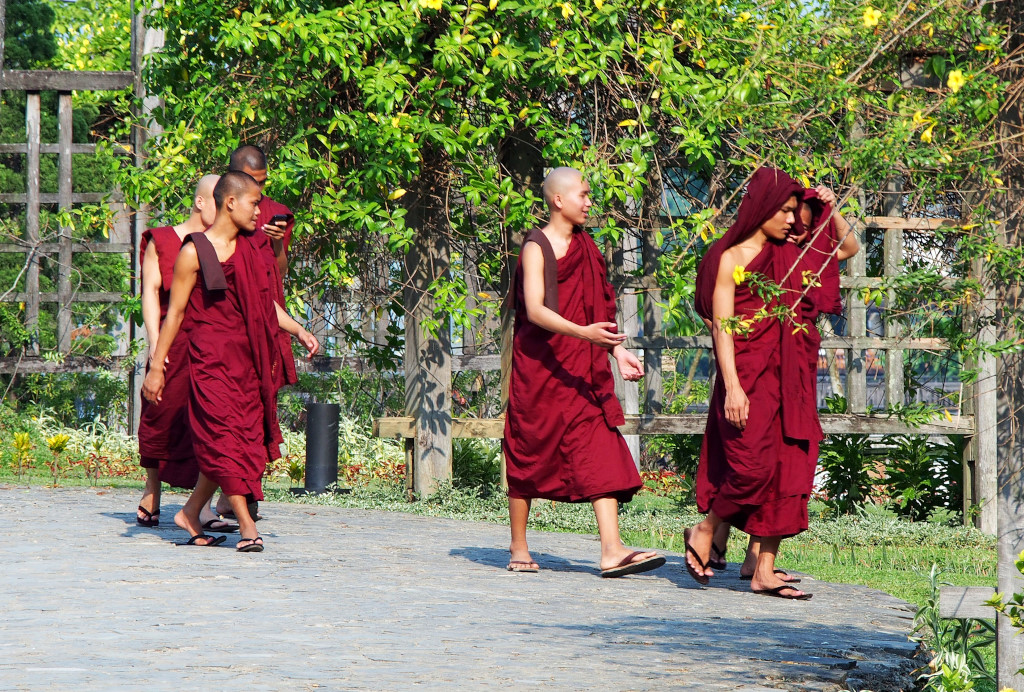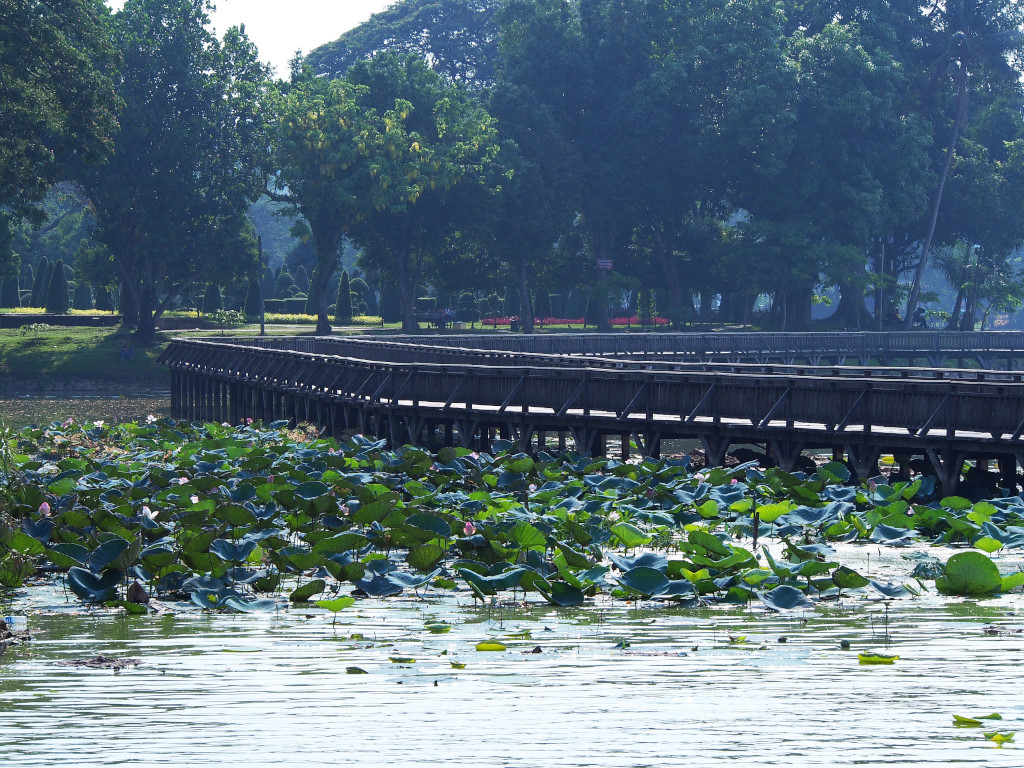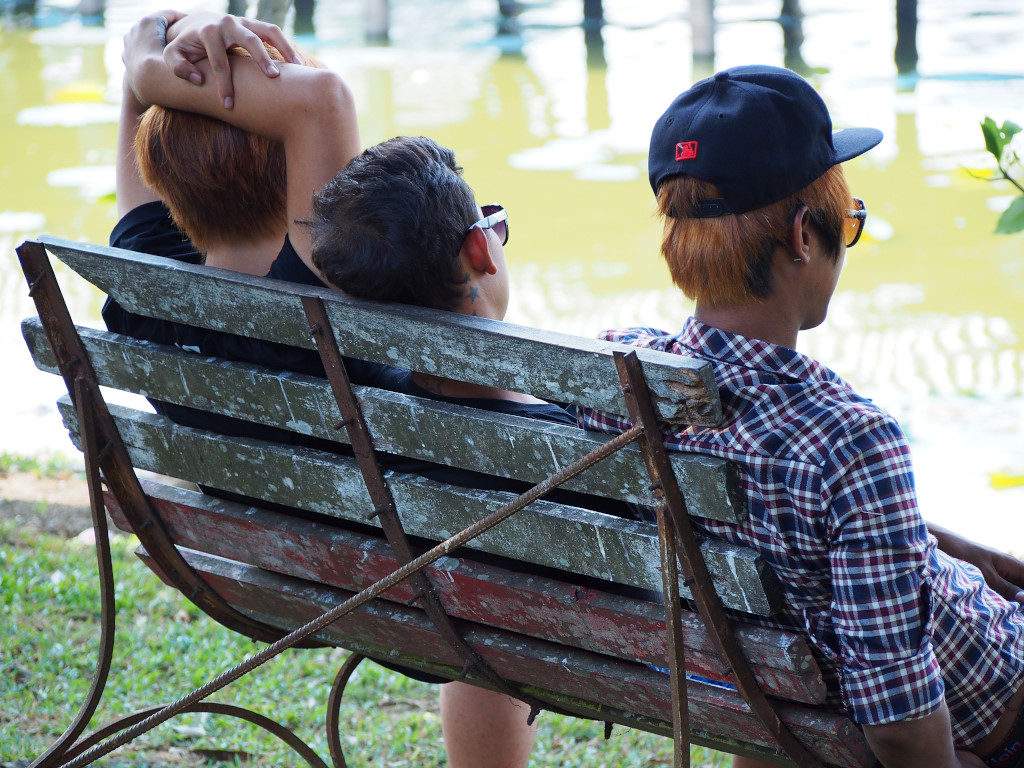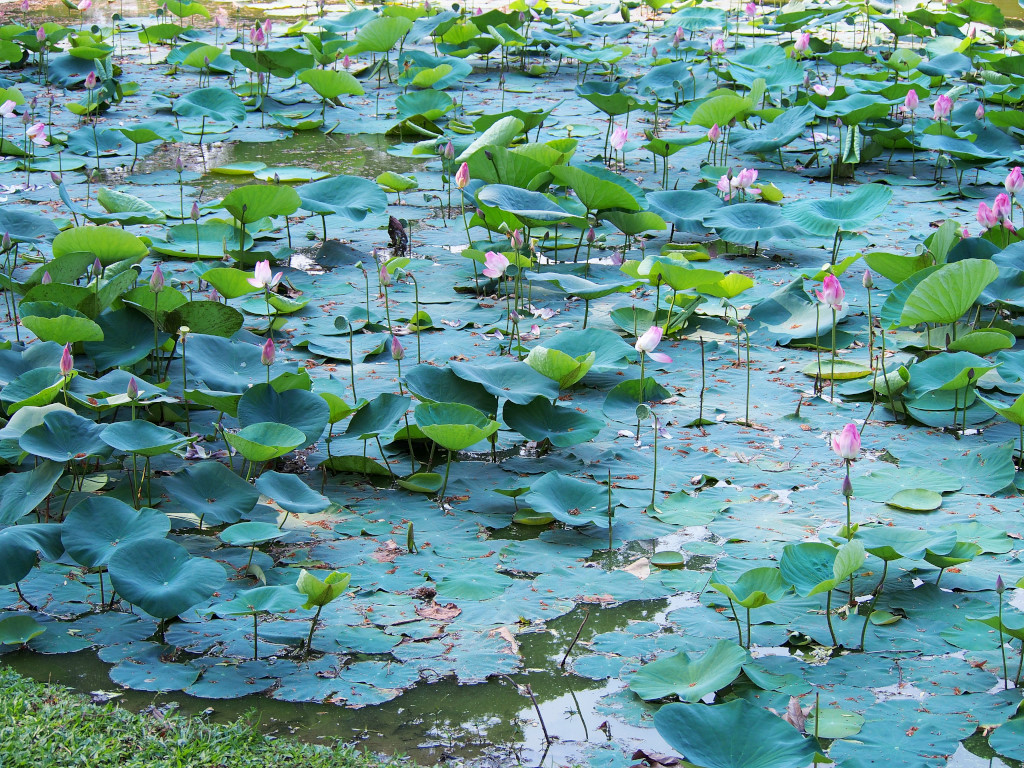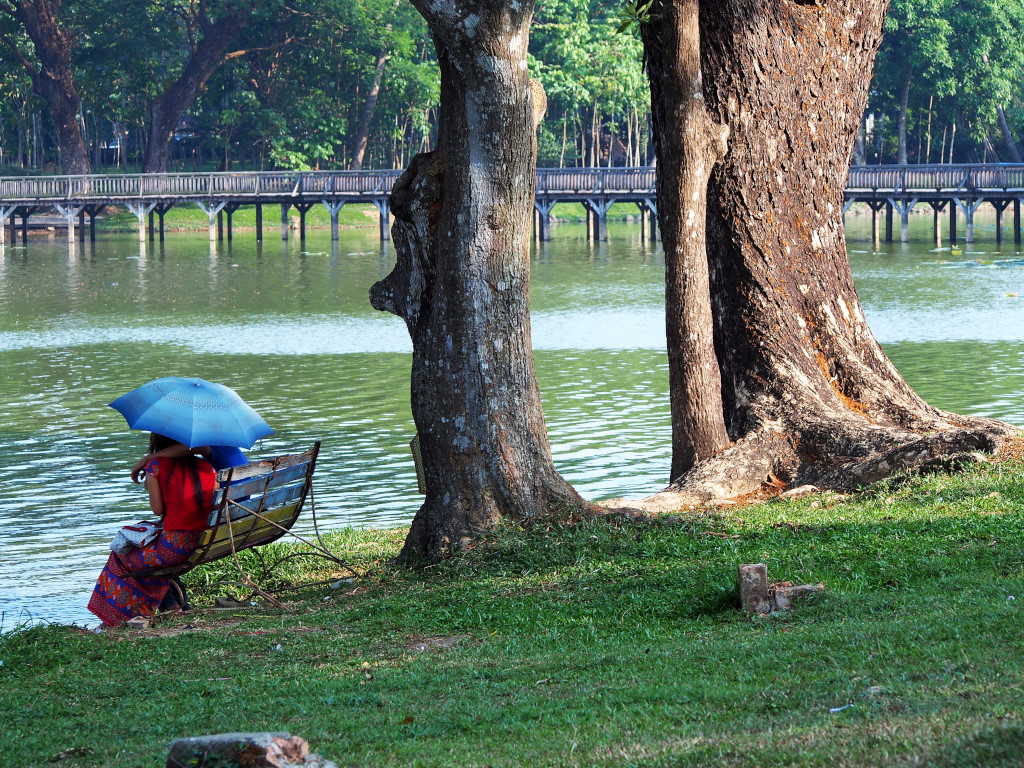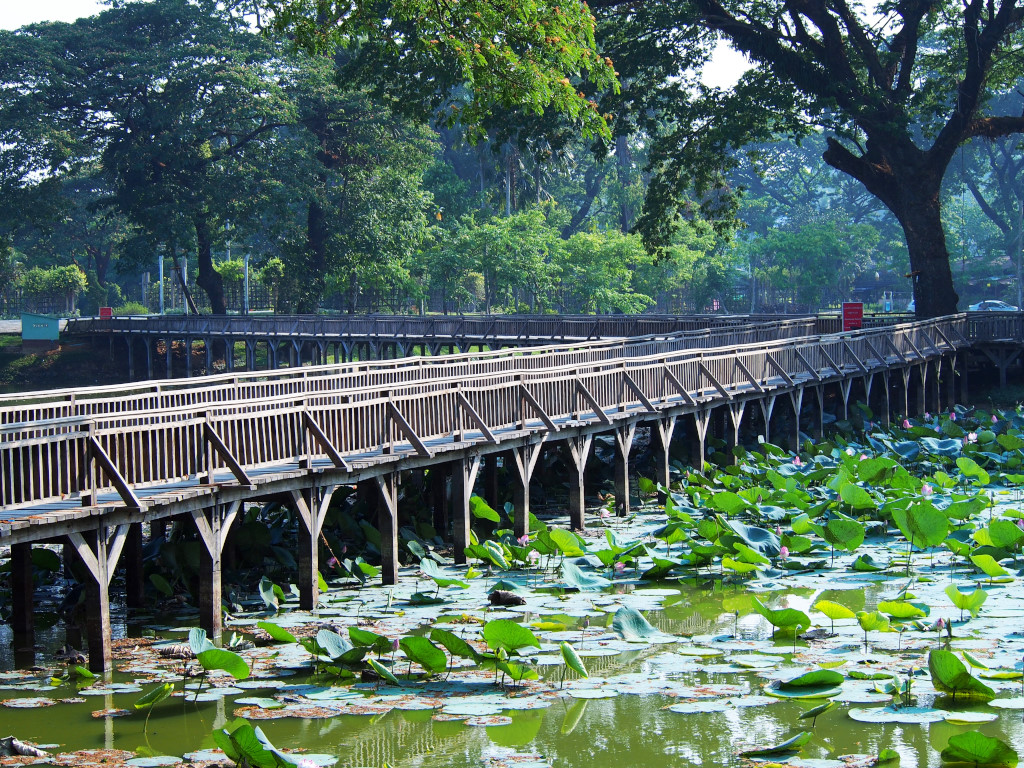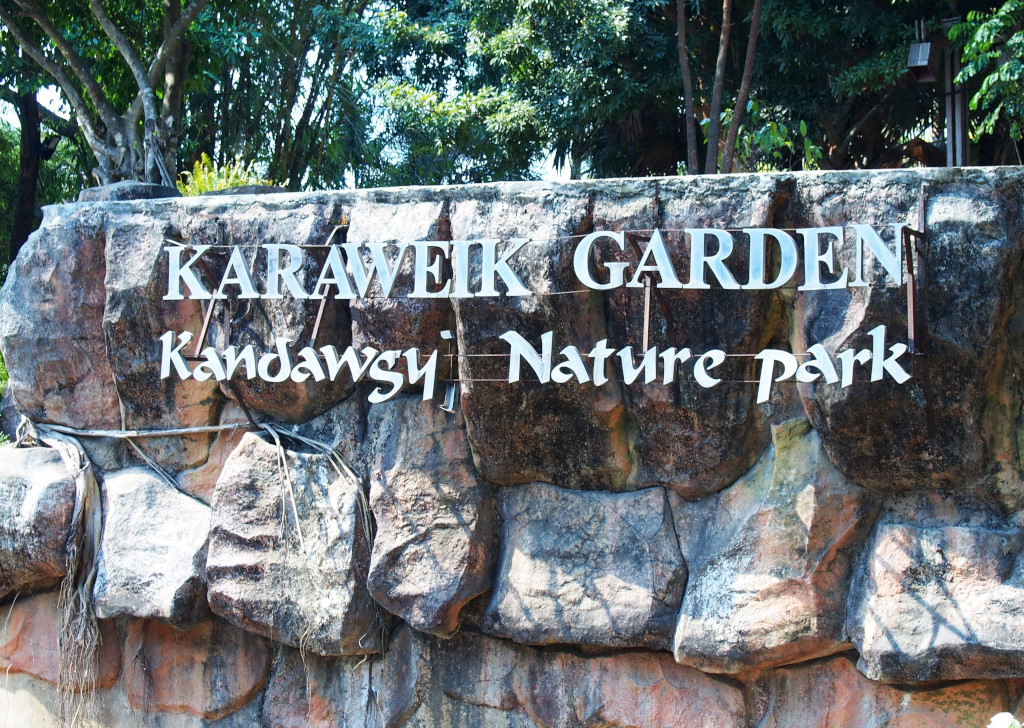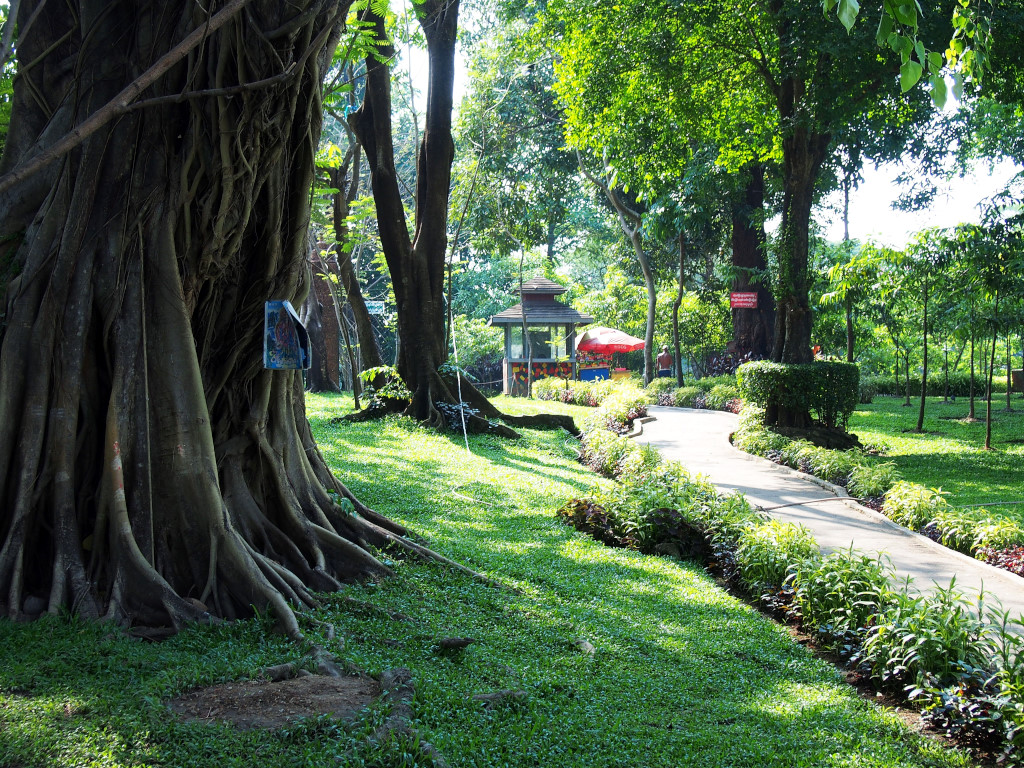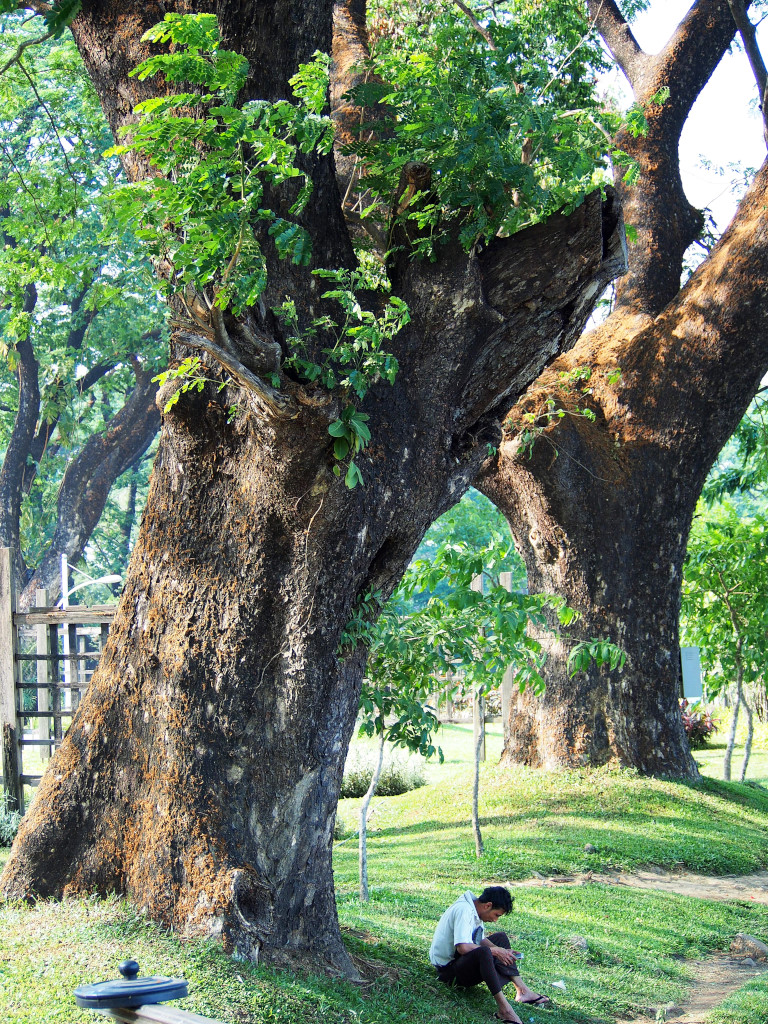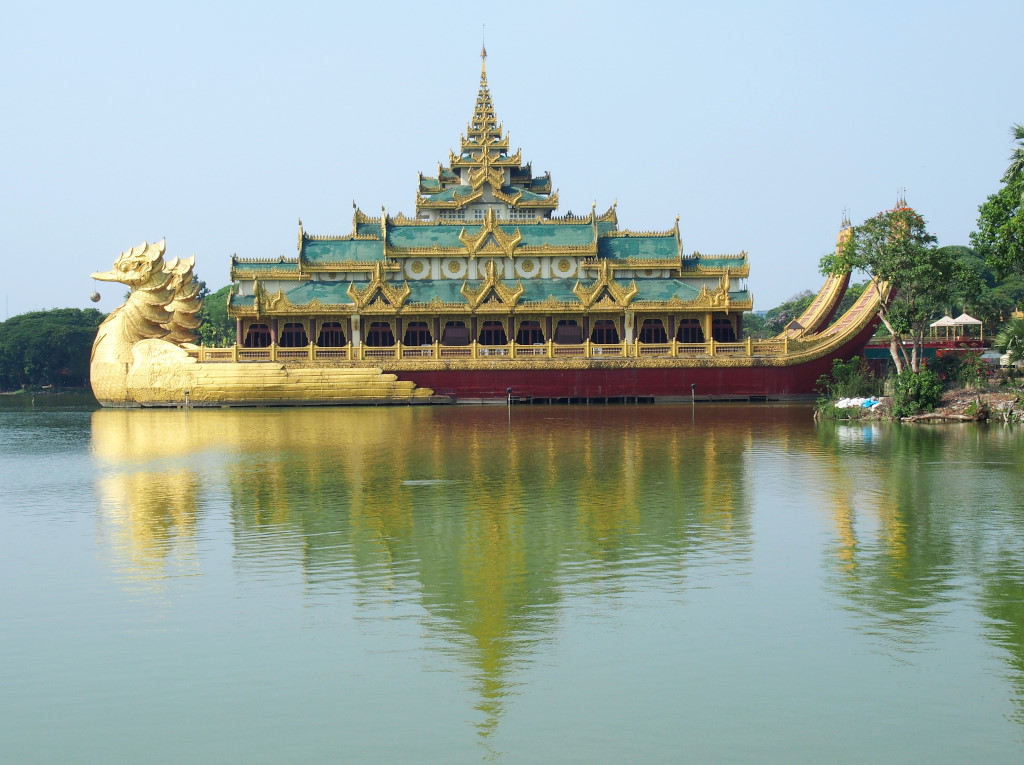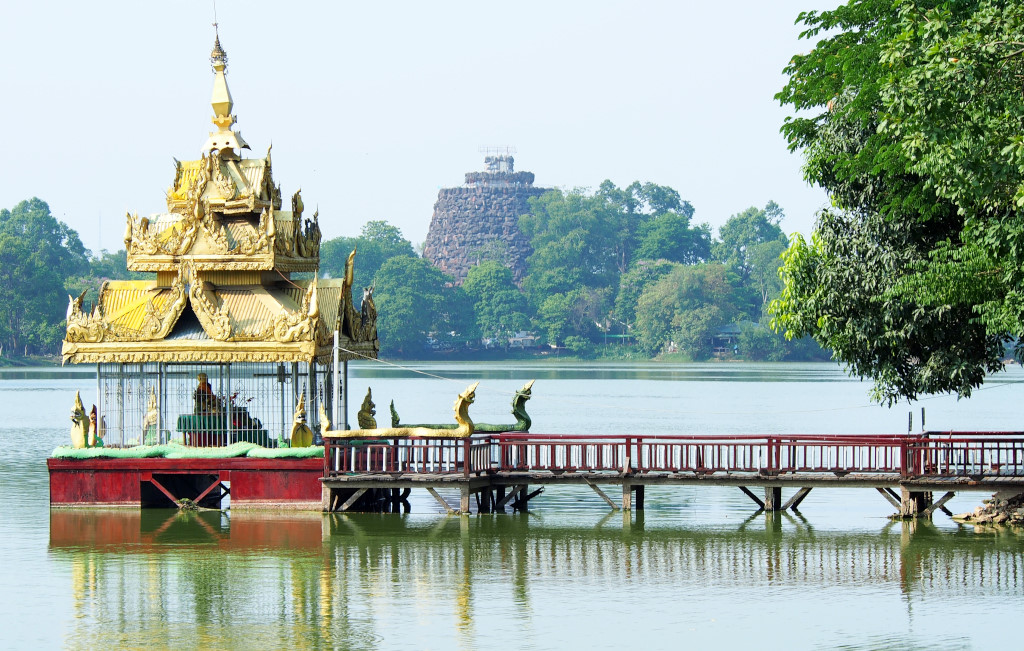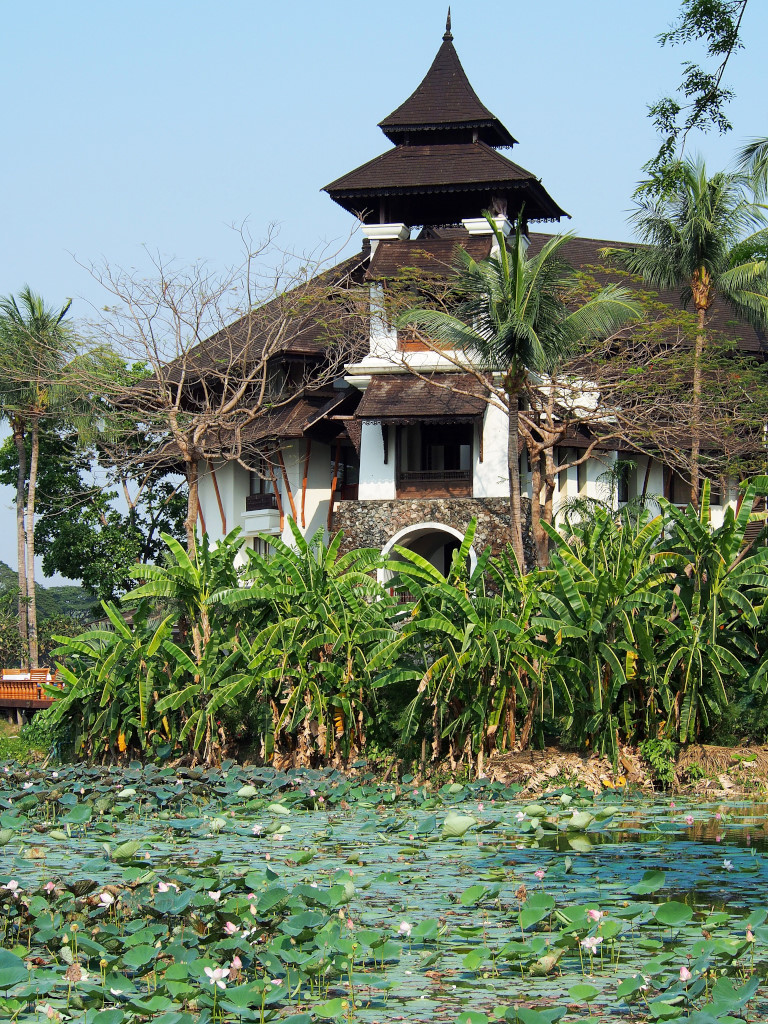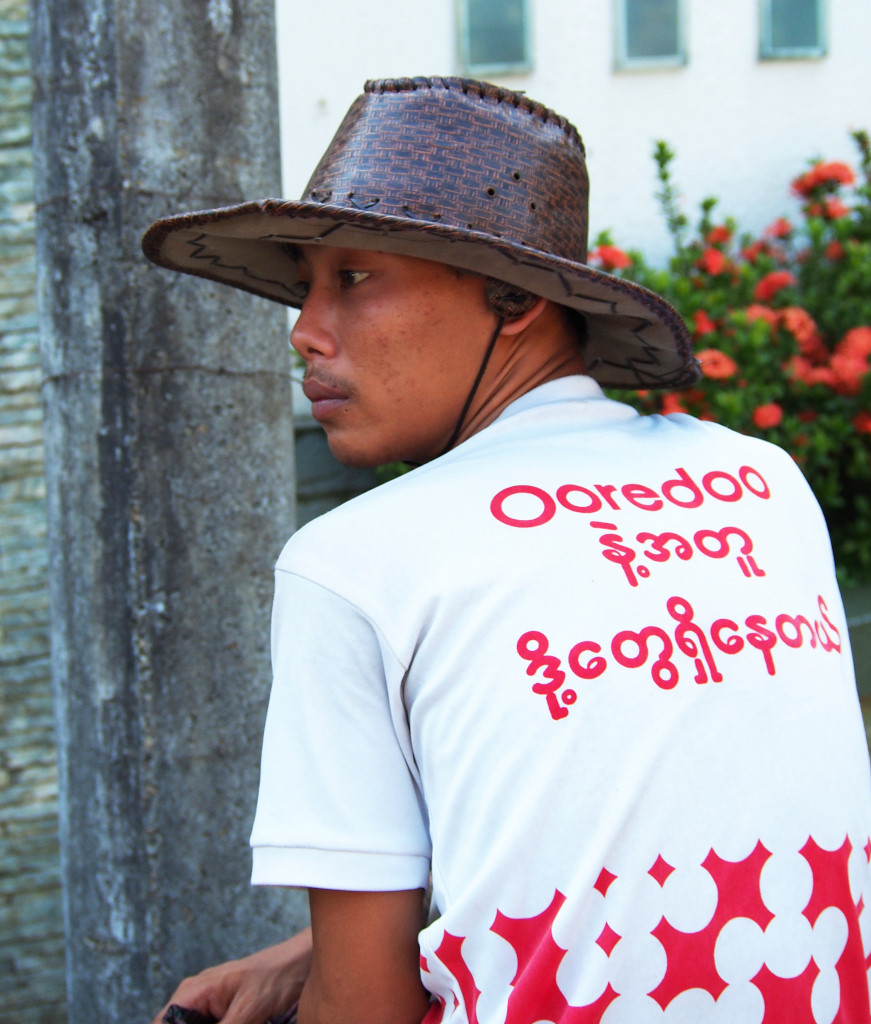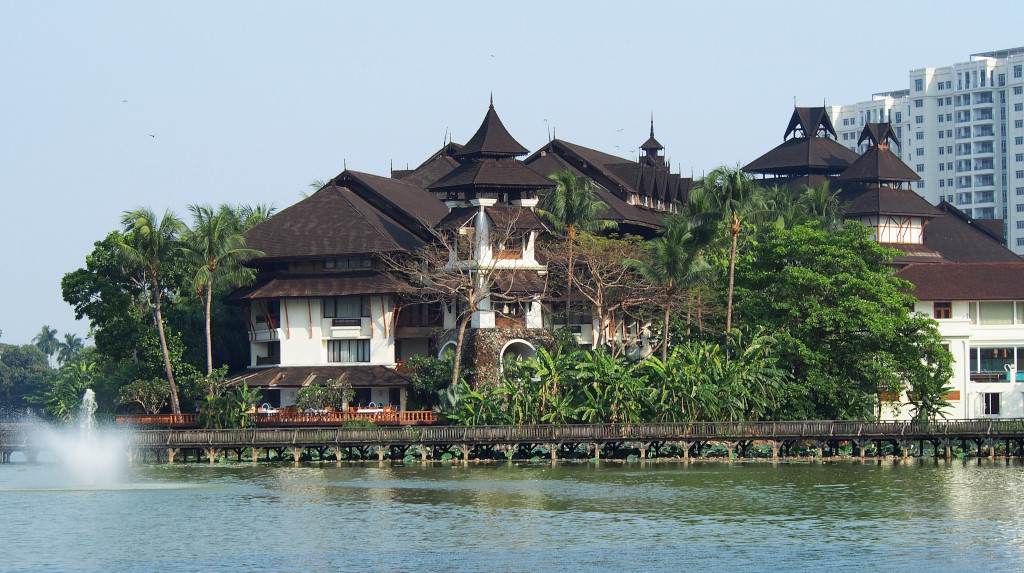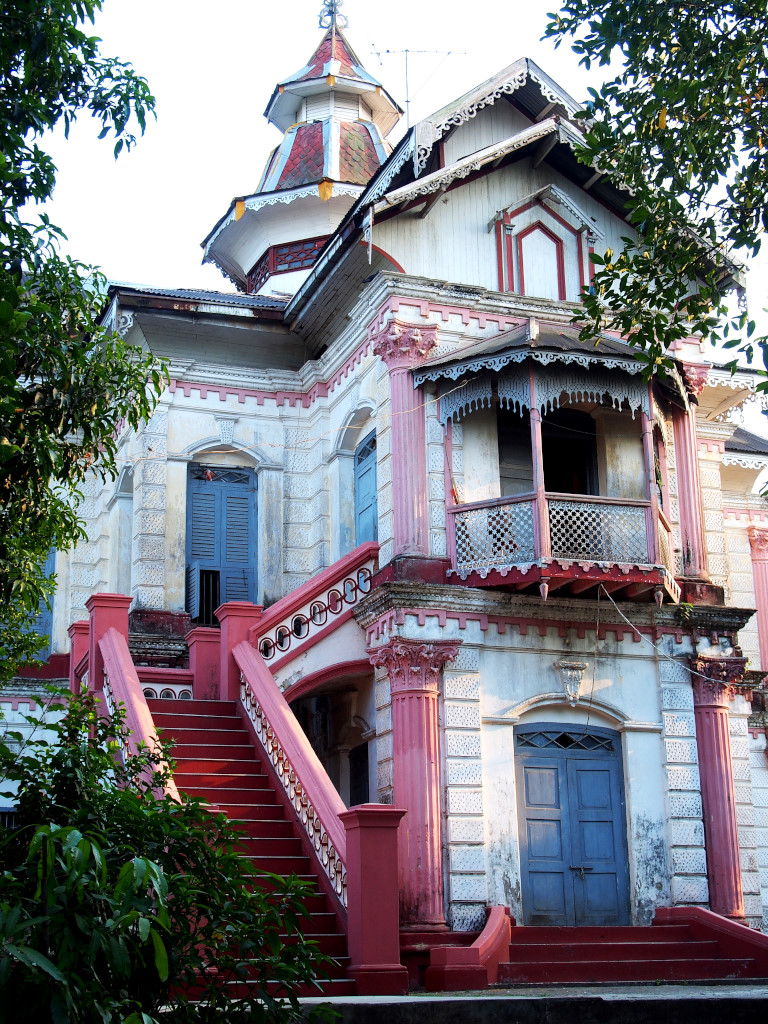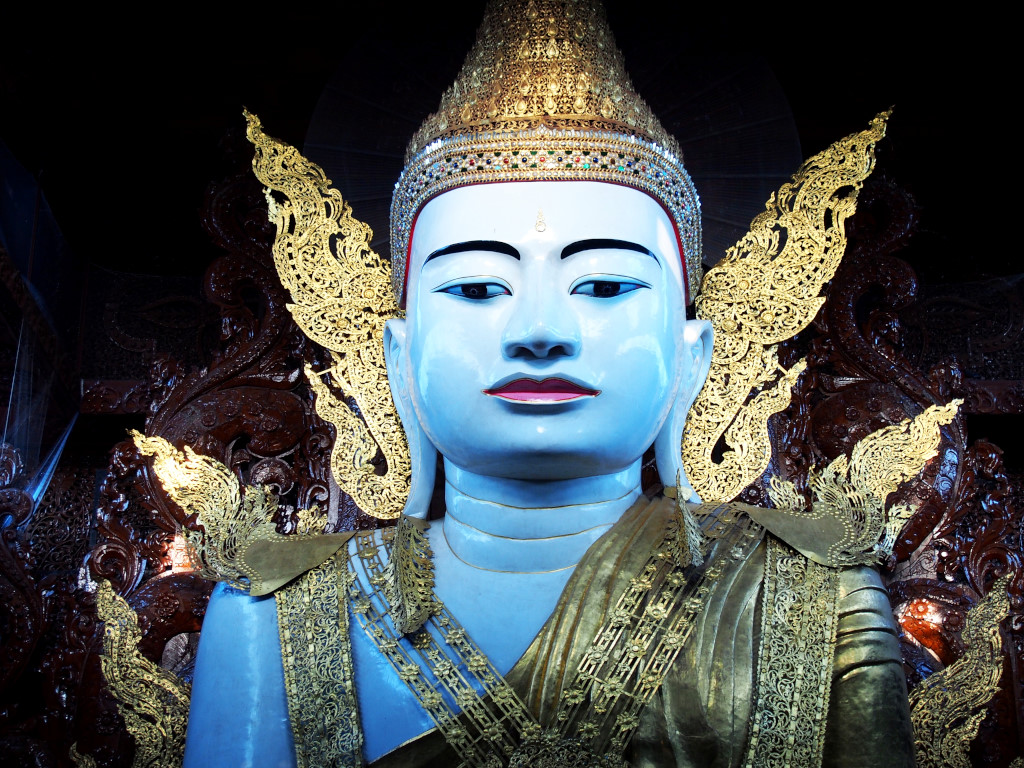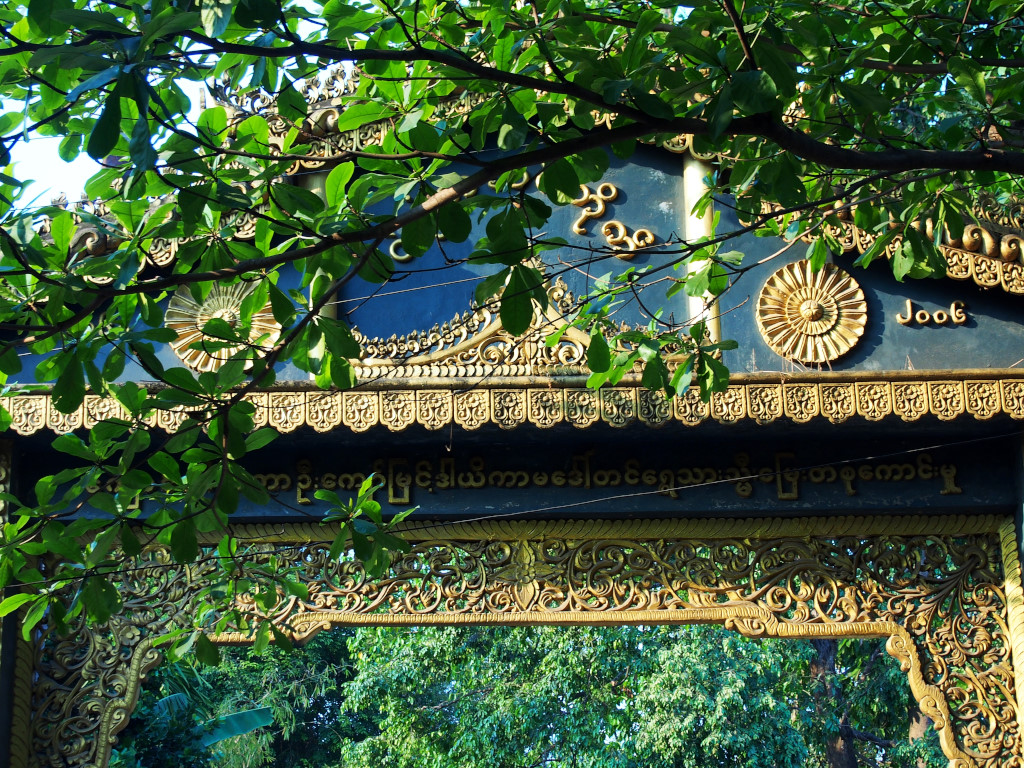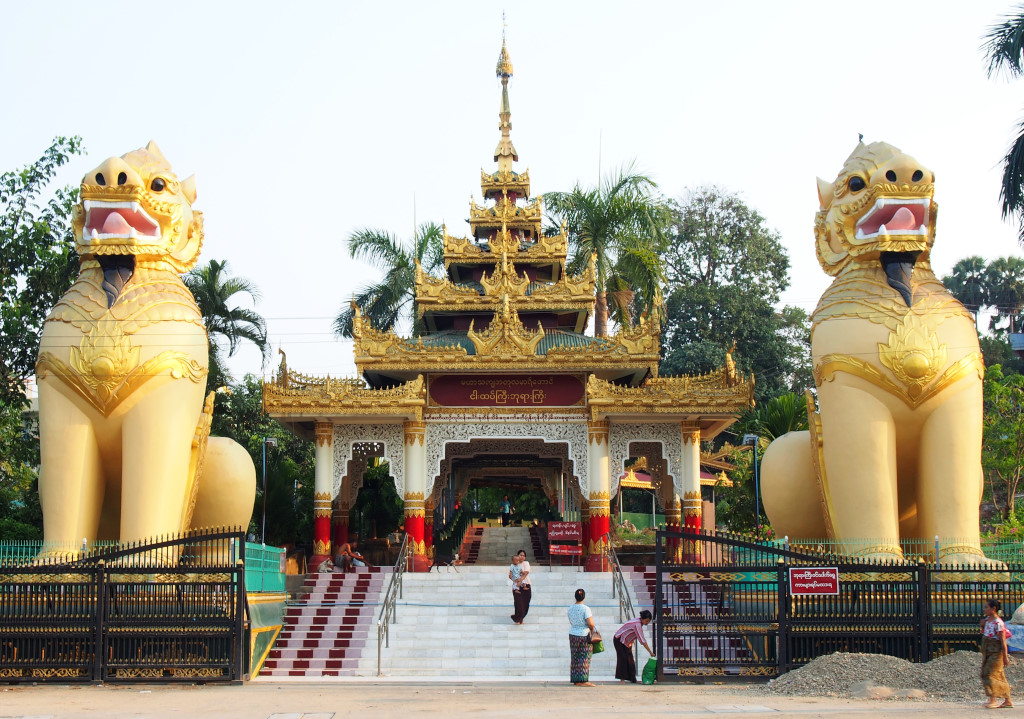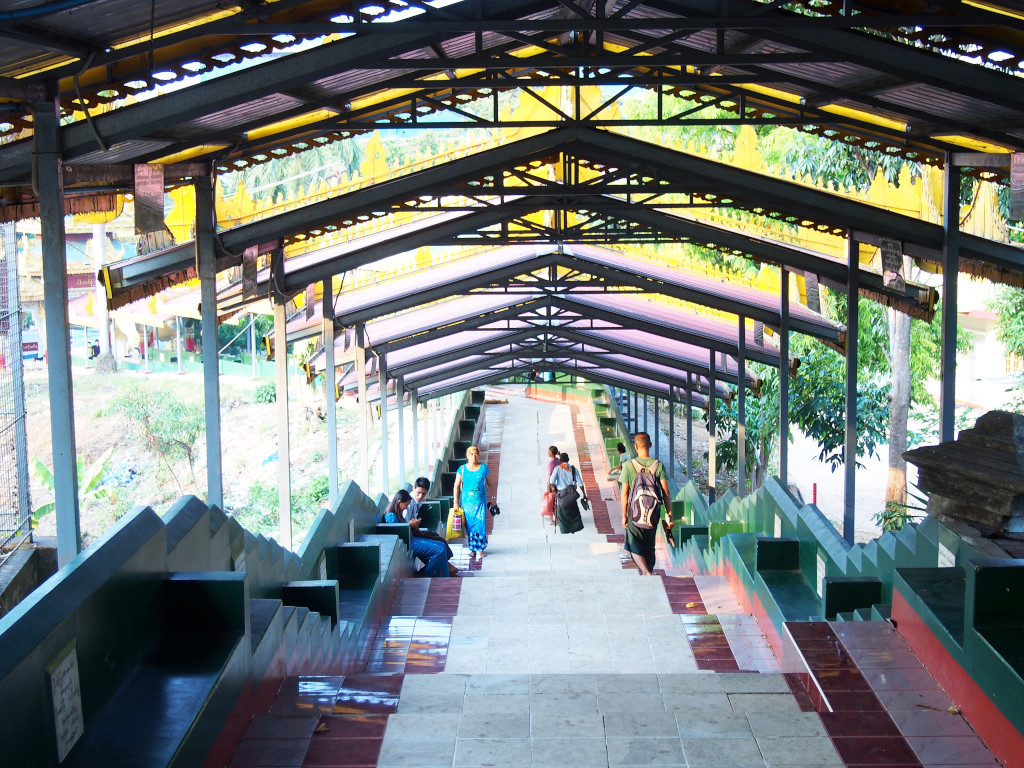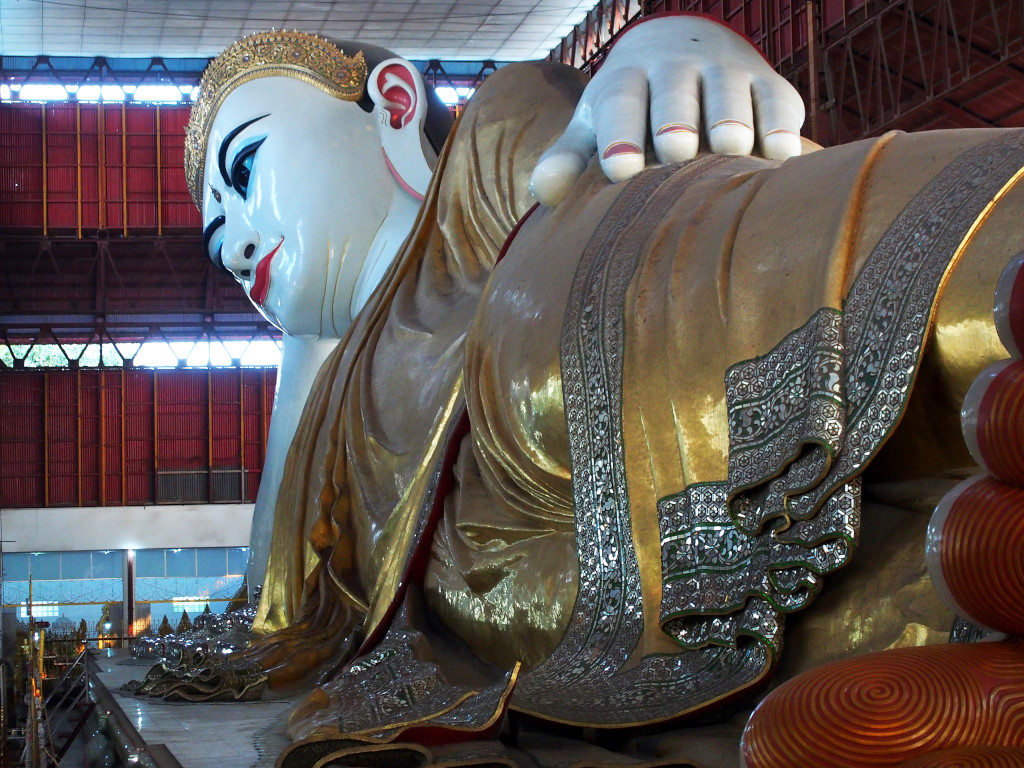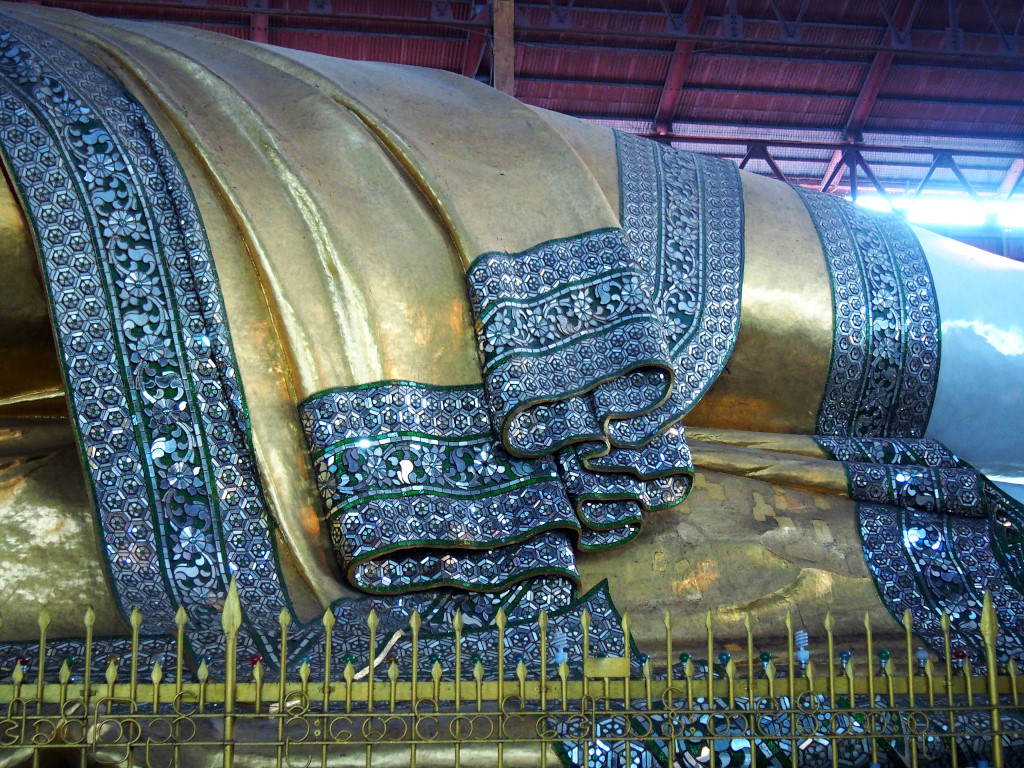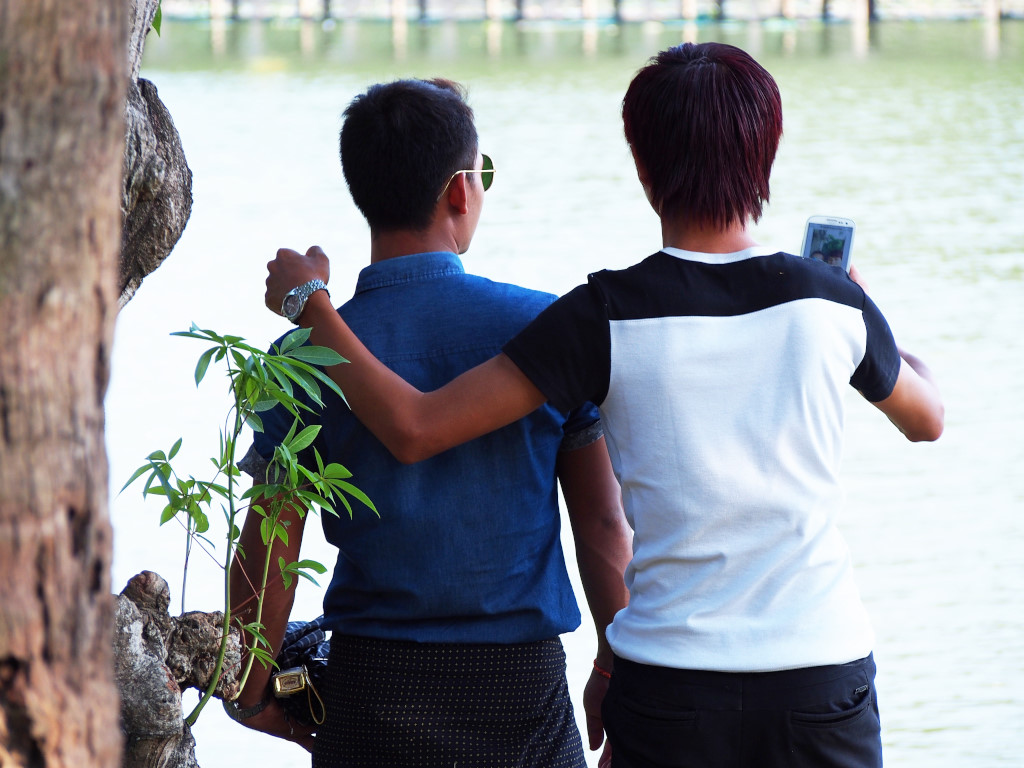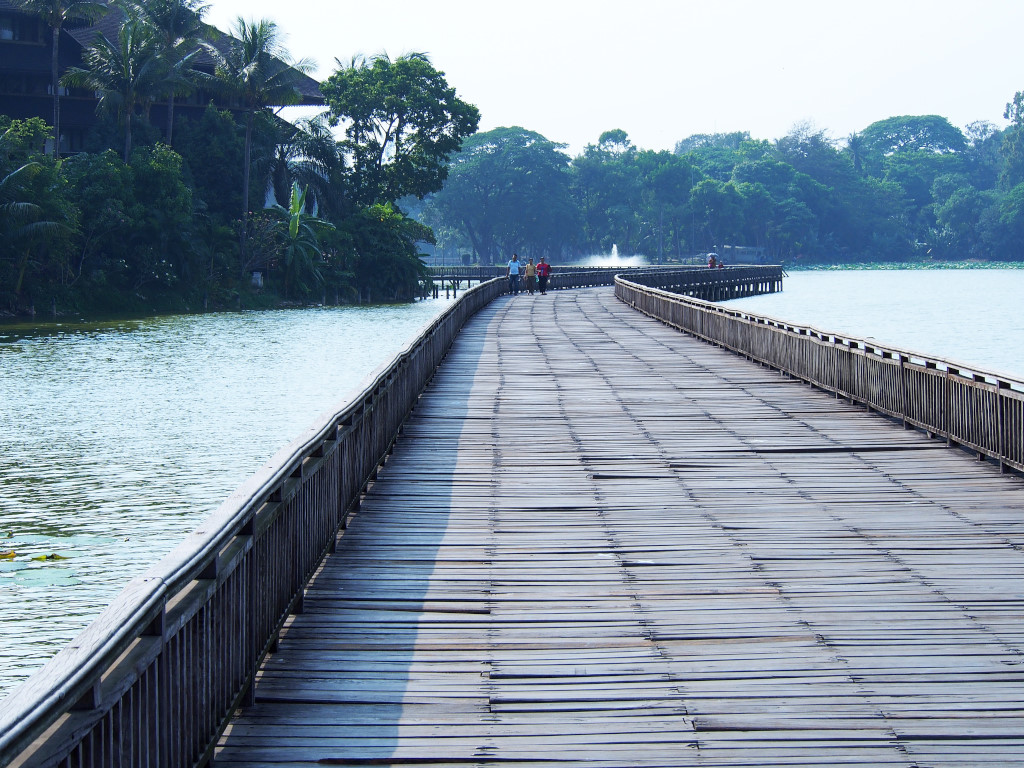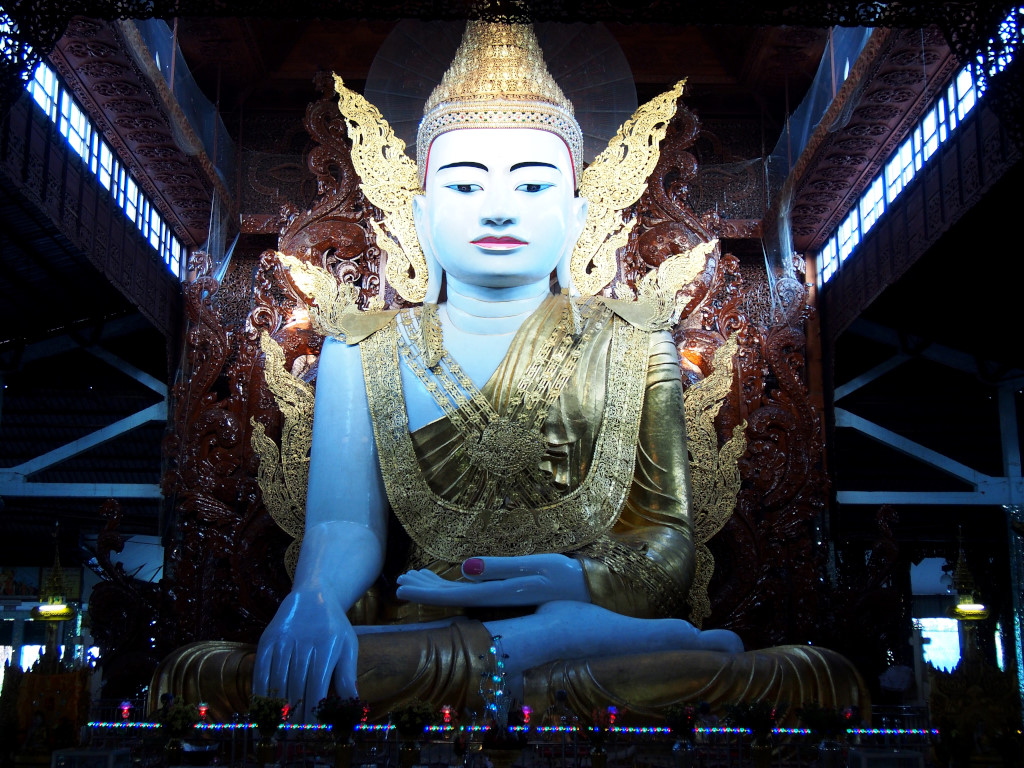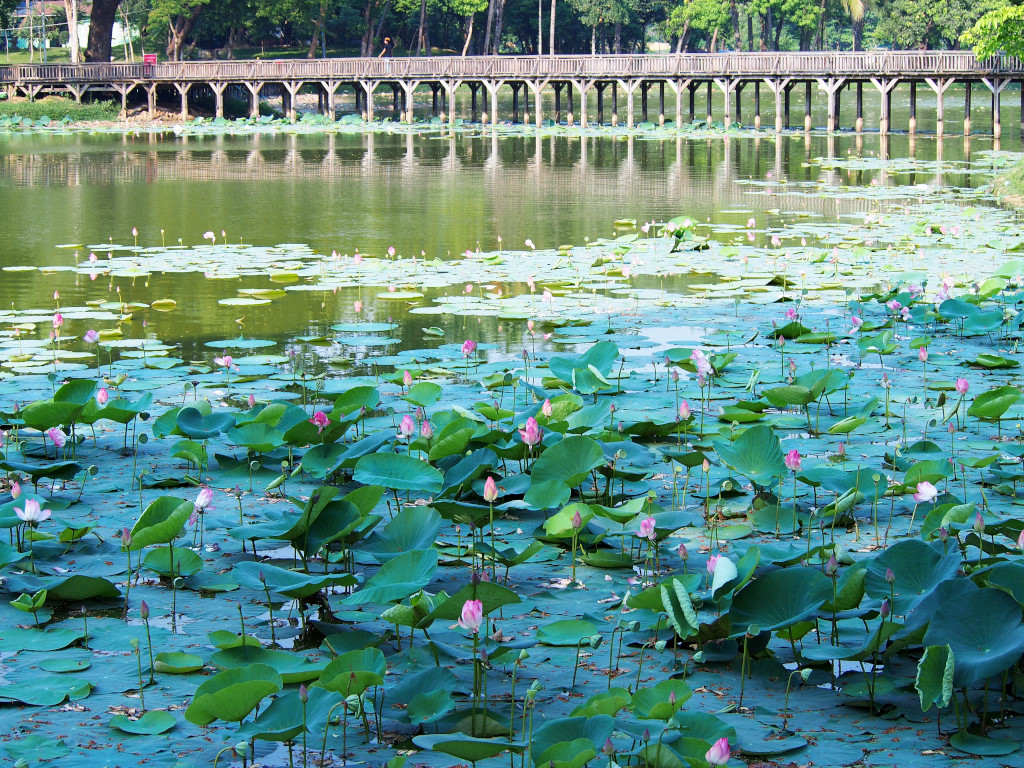April 7th, 2015
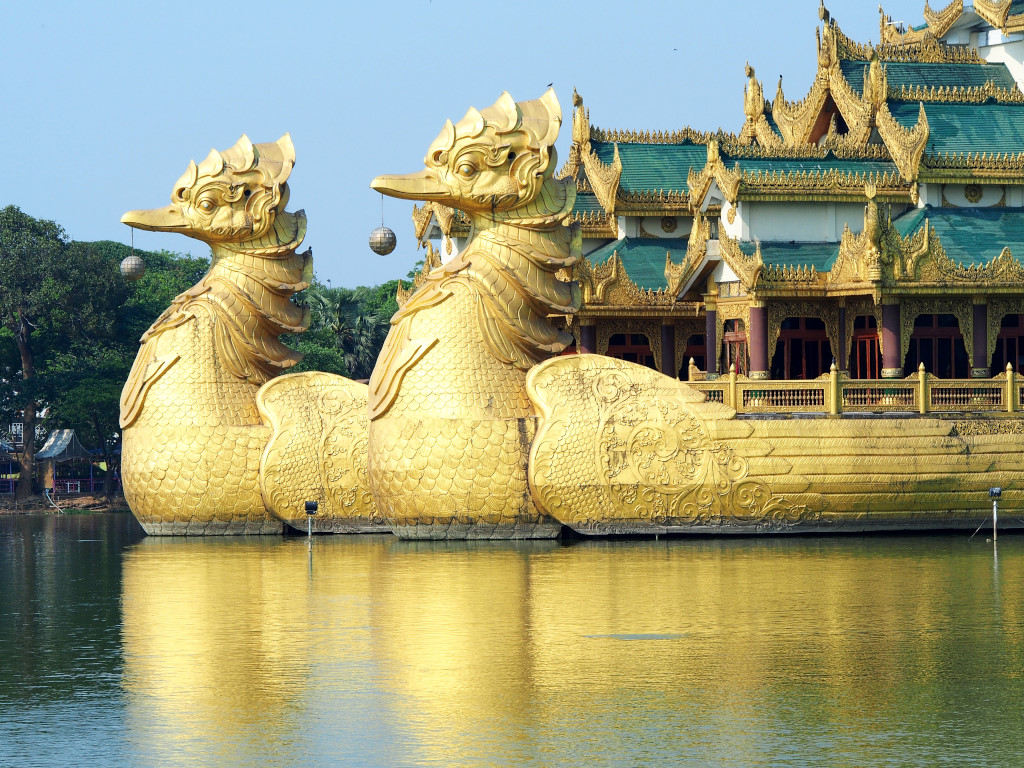
Another day materializes amidst the heat and continuous chanting of the monks at the nearby monastery. Breakfast is followed by internet-related activities and journal writing.

A stop in town had been intended but given that the bus running southward on Strand allegedly heads towards Kan Daw Gyi park, no trip to the centre will be on the agenda for the morning. Past Sule Paya, the morass of traffic surprisingly clears, only to materialize again when the bus quagmires on Pazun Daung Road, traffic now at a virtual standstill as the air conditioning actually blasts hot air while cool air blows in through the window.
The net effect as we crawl forward through the haze of exhaust fumes is that the interior temperature of the bus rises to the point of the intolerable.
Given our immobility, the only reasonable decision would seem to get off the bus and walk in the direction of the park, but somehow the bus that decided to park across the off-ramp has finally shifted its position, allowing us to move forward, cross the railway tracks, and then descend into another blinding mess of sweltering concrete, humanity and cars.
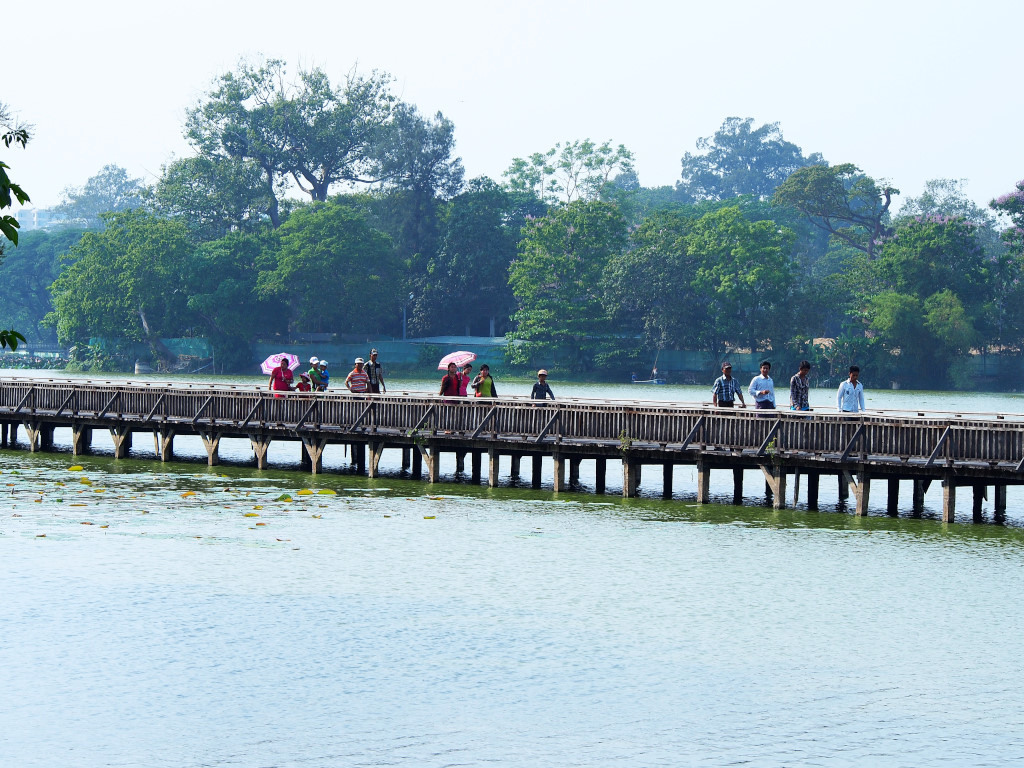
No, now it would really be better to walk, attempting to dodge the desperate drivers’ maneuvers, invariably at the expense of unwitting pedestrians attempting to cross the street. Taking into consideration the dangers of broaching the roadway, the blistering heat, dodging open sewers, drooping power lines, circumventing food carts, parked cars, as well as errant pedestrians, even walking the few blocks to the park seems like a major chore.
Arriving at the confluence of green is an immense relief, coming from the preceding urban hell, speaking volumes of the contradictions in evidence in the city.
It is completely unclear to me as to what the admission price at the Karaweik Gardens will buy, and the group of young workers at the workers are equally at loss on this subject. The glittering gargantuan barge dominating the horizon is either off-limits or closed for the moment, so then why would I pay admission here? What should a visitor be able to see for the admission price?
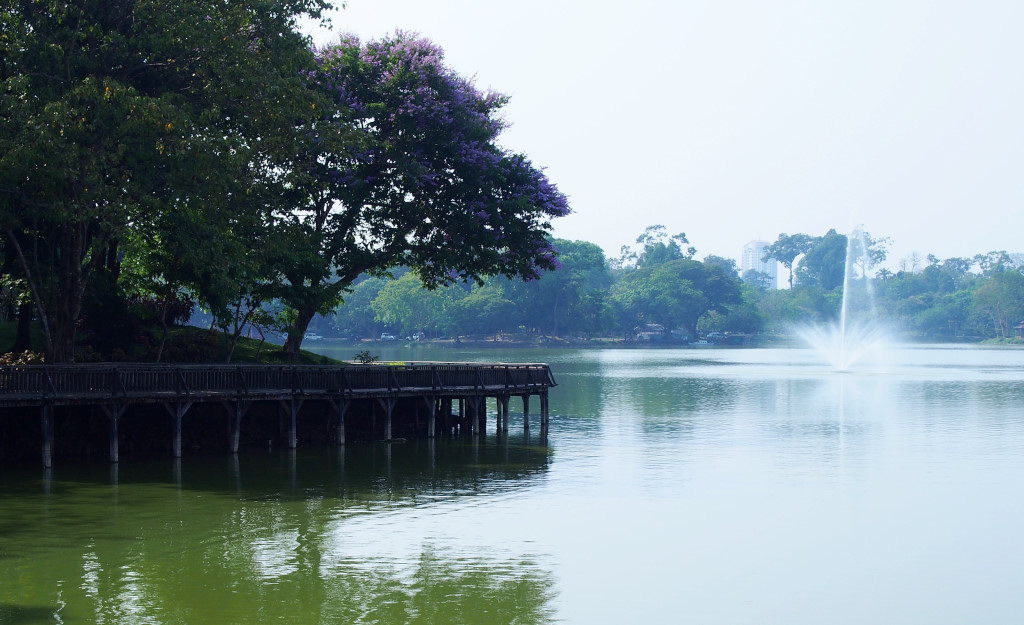
The discussion flows back and forth, but no amount of questions results in any kind of meaningful response. Abandoning the entrance to the paying garden, it is apparent the Kan Daw Gyi park itself is as beautiful as the paying garden could be.
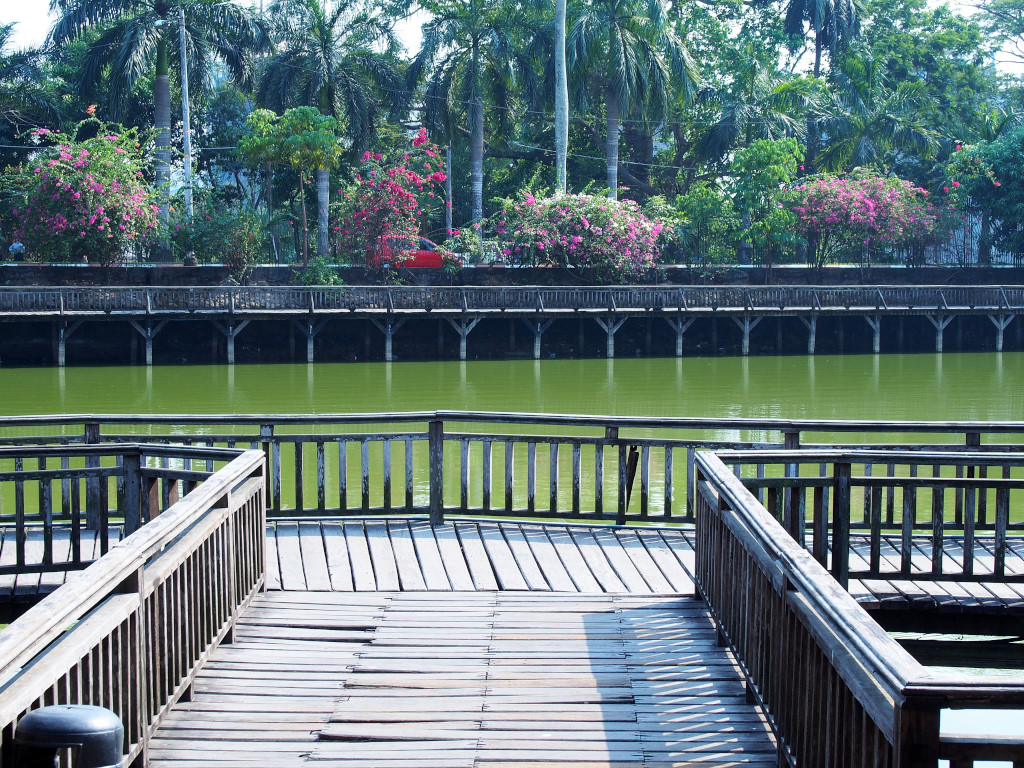
The park does not fail to astonish with its beauty. A broad teak bridge spans the shallow artificial lake in the most artful manner, with a heavy tree canopy shadowing the paved paths weaving sinuously along the lakefront, which is studded by fountains shooting jets of water high above the waterline.
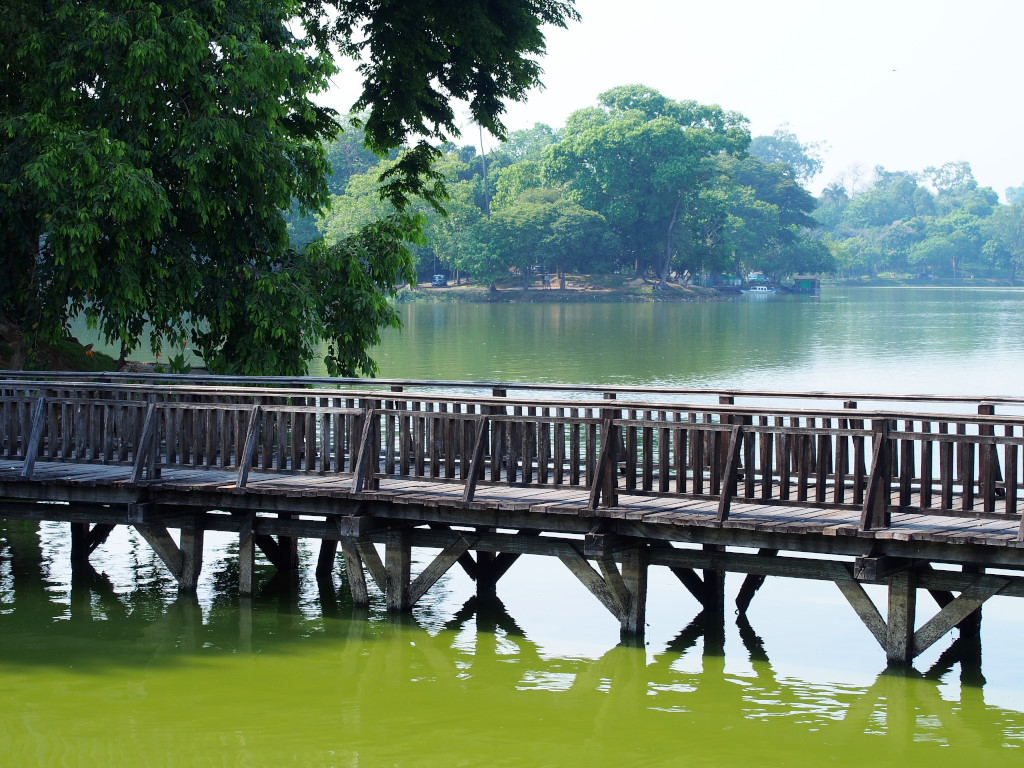
The staggered green rooftops of the floating Karaweik palace are gabled with the characteristic golden bargeboards, and fronted by the twin golden griffin-like birds, the replica of the royal barge visible from vantage points across the lake. Lungyi-clad workers heave cut timber into the water from the walkway above, assembling a structure intended to carry the water supply from the upcoming Thingyan festival into the park.
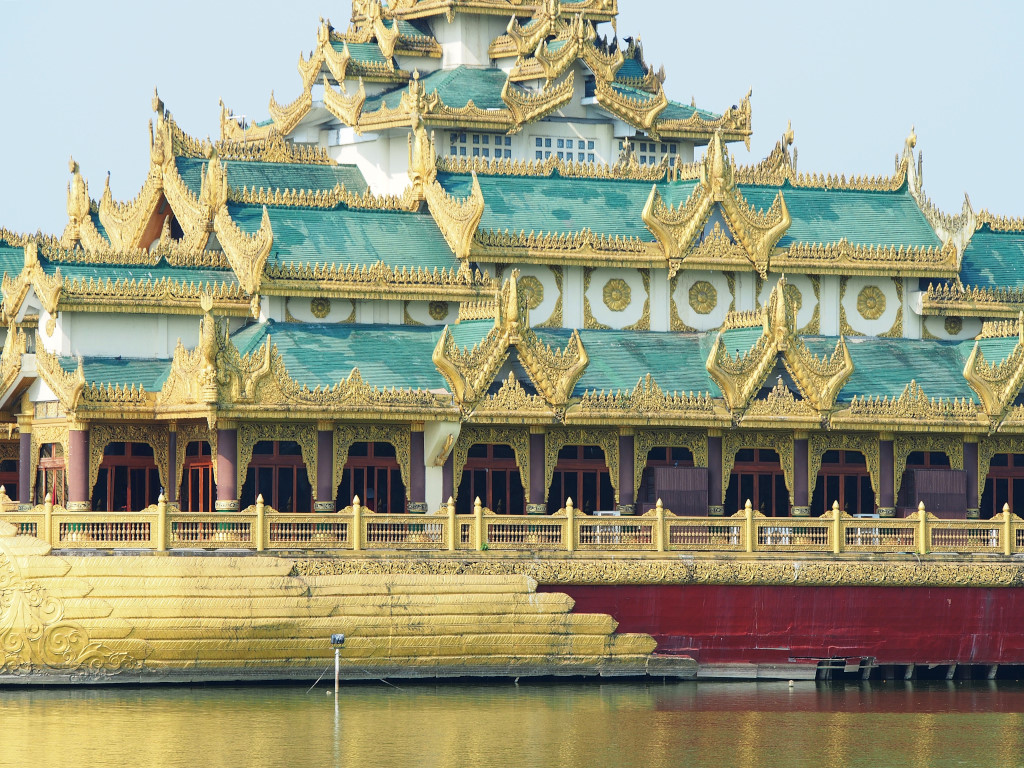
Kan Daw Gyi offers a continuous and spectacular play of light and shadow amongst the shades of lighter and darker green, water, land and air, the wooden platform carrying guests to this miniature temporal paradise in a straight line alongside the lake, embracing a broad pavilion, then jutting out at an angle according to the variegated shoreline of the lake.
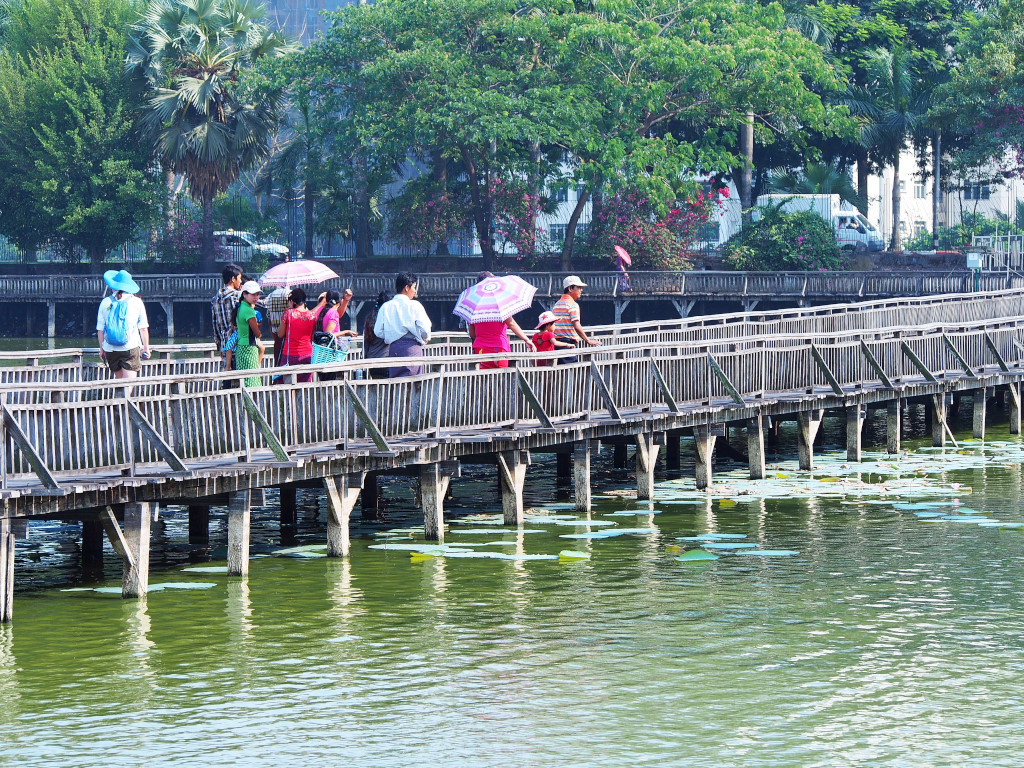
Pink bougainvillea captures the visitors’ eyes closer to the roadside, throwing shadows onto the shapes trudging into the sun-bleached afternoon. Atmospherically, a temple occupying a small promontory faces the Karaweik Palace, another suitable enclave for dreamers and the obligatory young lovers that inhabit such parks in the city.
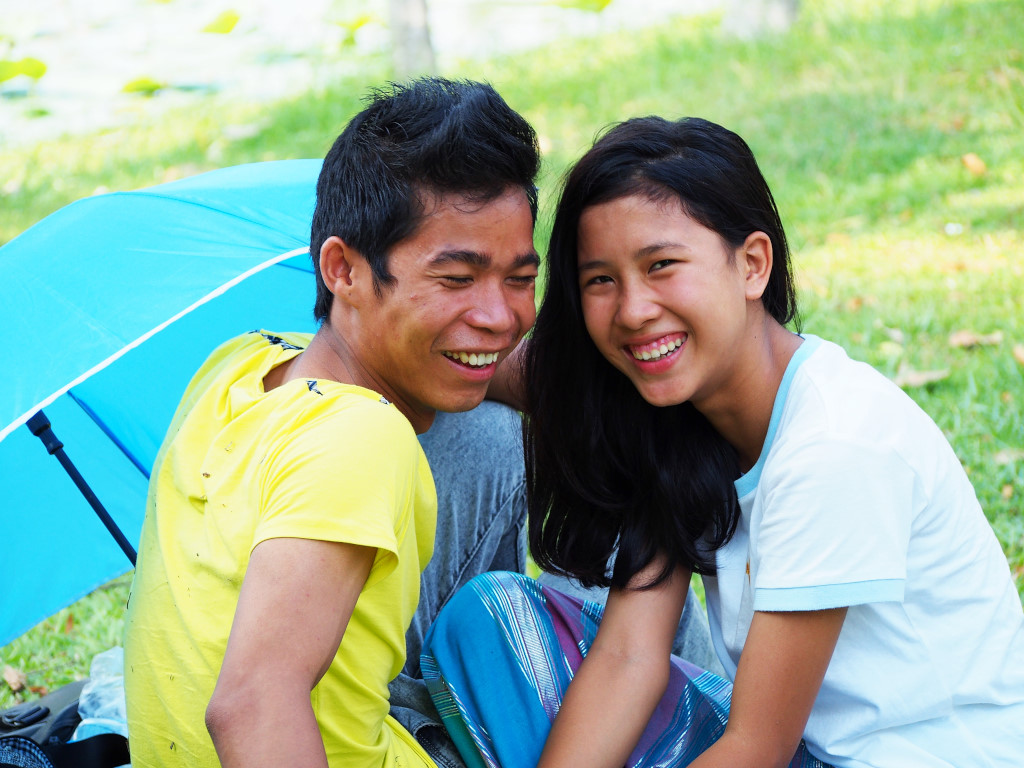
Lotus pads atmospherically cluster between the teak bridge and the shore, concentrating on the western side of the lake around the luxurious Grand Kan Daw Gyi hotel. The broad canopy of the tropical trees lining the parkland add to the drama and serenity of the park, while spectacular views are offered of Shwe Dagon pagoda to the west of the park. In this park as in the other green spaces in the city, young lovers gather in the privacy of their umbrellas, although not as much as in the Peoples’ Park.
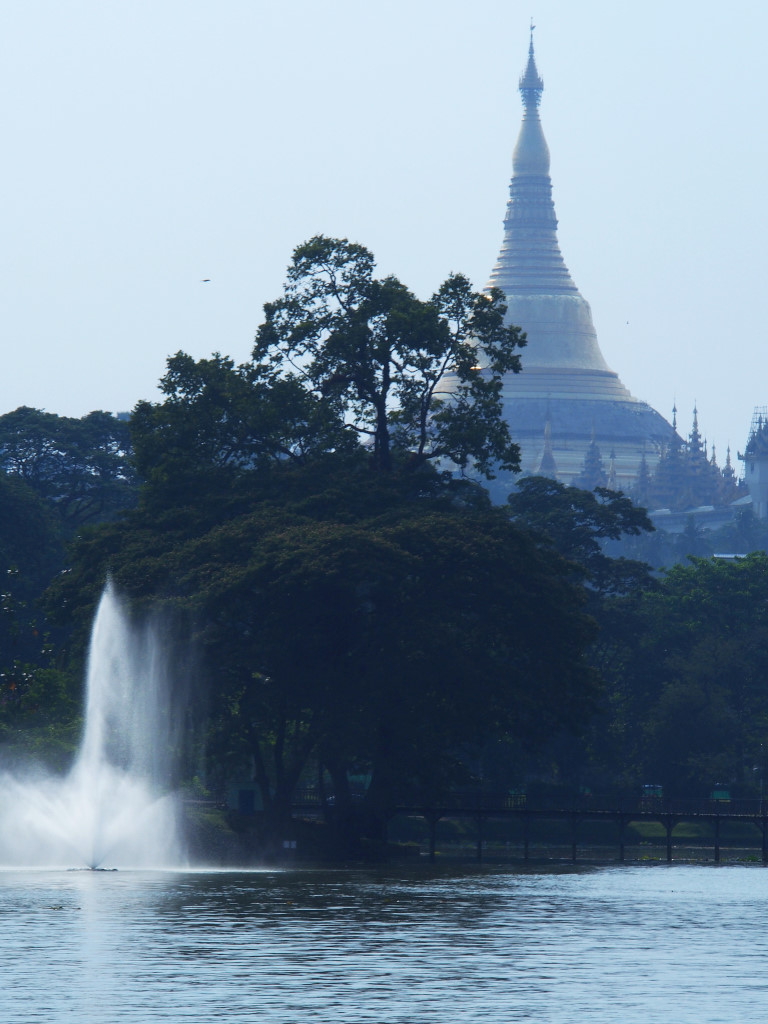
The bucolic nature of the southern portion of the park contrasts with the extensive construction taking place on the northern periphery, as well as the somewhat pedestrian restaurants and parking lots that litter the space, although the entire terrain is nonetheless beautiful. Rather than continue walking eastward along the north side of the park, I would like to visit the dual Ngahtatgyi and Chaukhtatgyi pagodas located somewhat to the north.
Despite a few rambling dilapidated bungalows and shacks on the serpentine uphill road (the taxi drivers having the good graces to not use me as target practice), most of this area is given over to unequivocal wealth. Vast modern mansions and tall, impeccable condominium towers are omnipresent, a far cry from the exceedingly humble living conditions of most Yangon citizens. The prevalence of barbed wires along the high walls is a testimony to the sentiments of the inhabitants towards the broader populace.
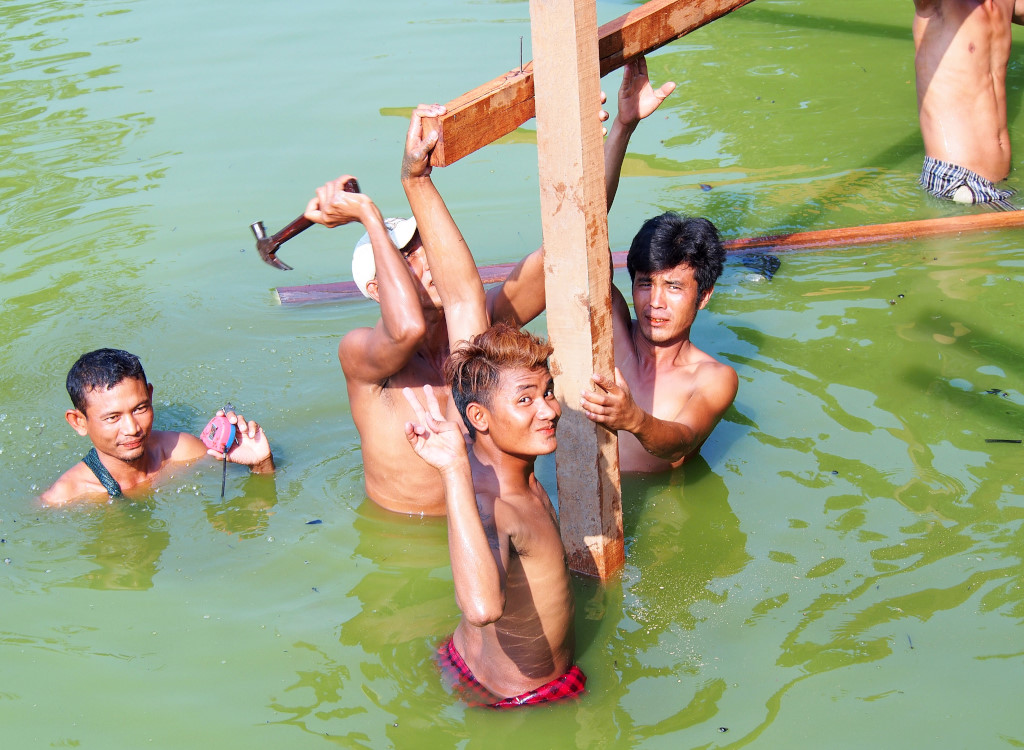
The road weaves through the thick undergrowth and rustic monastic enclaves, highlighting some astonishing religious architecture. I pass through the gate up towards the dispersed structures that comprise the Ngahtatgyi paya, largely modest but atmospheric in their dense leafy canopy.
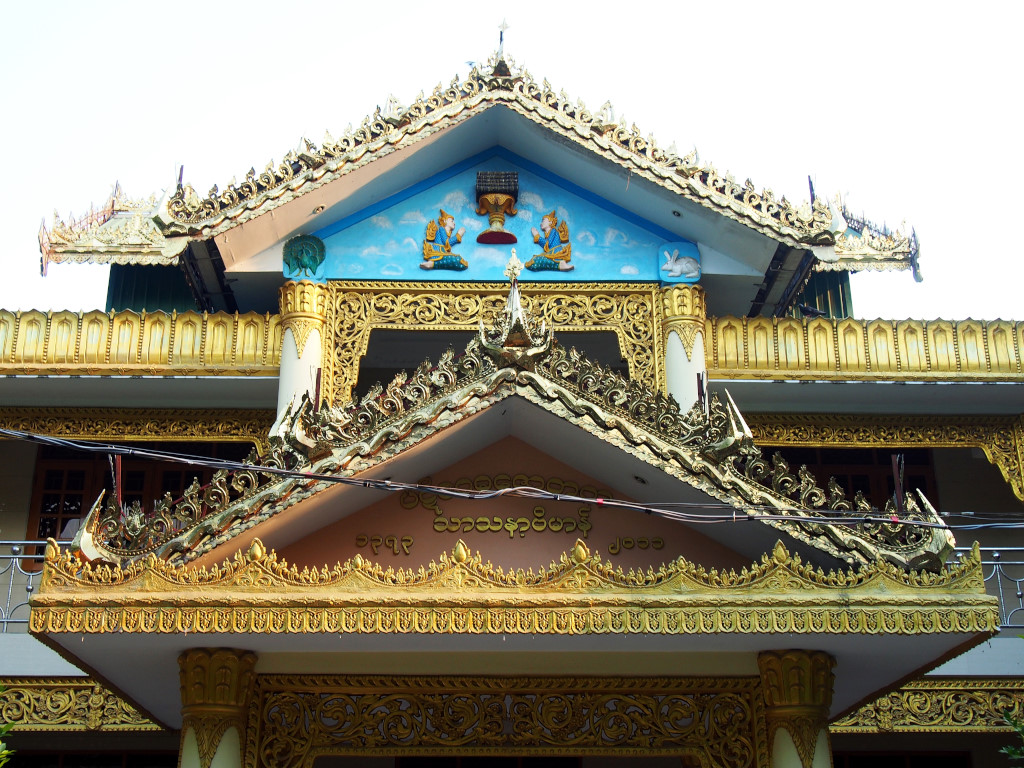
Some monks point in the direction to the central building. As always, sandals must be removed prior to entry, the serene seated gigantic Buddha swathed in gold difficult to capture photographically in the best of circumstances, never mind in the pale afternoon light.
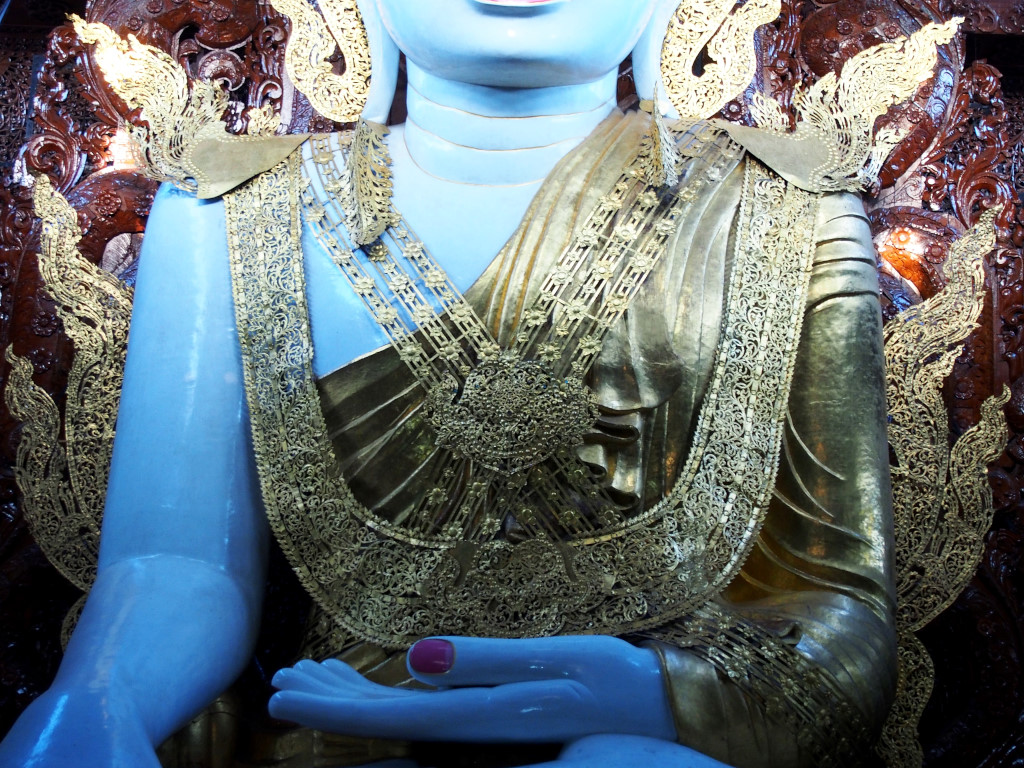
Serene, eyes cast slightly downward, with the typical mudra involving one hand pointing toward the earth and the other palm on the lap facing upward. Yet there is little else about the figure as conventional as the typical seated Buddhas seen elsewhere.
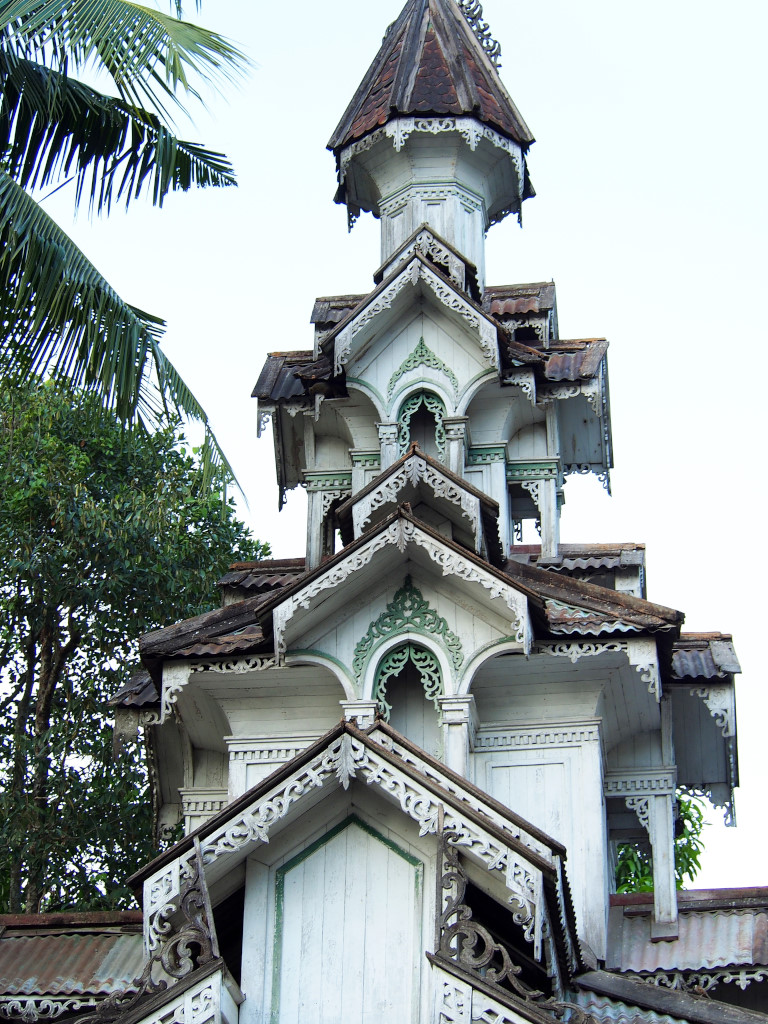
The statue is swathed in vast tracts of filigree gold commensurate with the size of the statue, with a tall, fluted intricately woven cap soaring skyward, elaborately formed flame-like wings emanating from the side of the body, and a multi-stranded pendant culminating in a brooch of enormous proportions, all intricately and delicately sculpted.
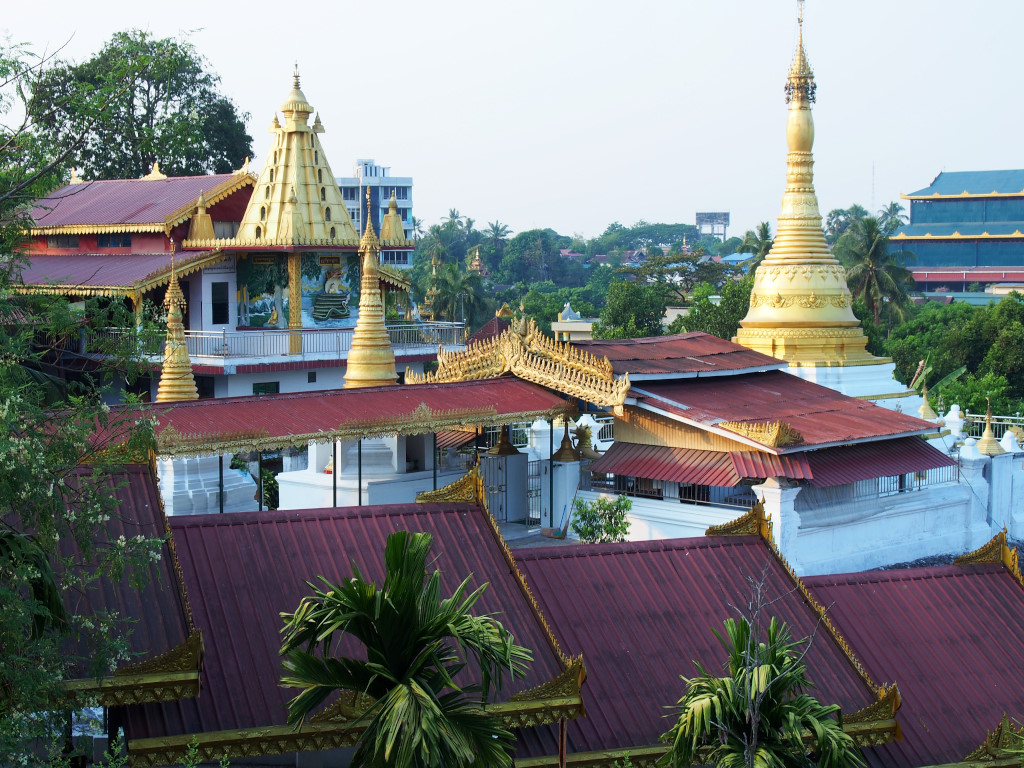
The canopied terraced walkway leading to the main road lying to the west is lined with the bodies of poorly kempt dogs eyeing me suspiciously. The path to the sister Chaukhtatgyi temple continues on the far side. An equally astonishing spectacle greeting the visitor, a reclining Buddha of vast proportions, and again, rather than simply decorated, wreathed in a golden raiment bordered in elaborate floral brocade, the face gazing downwards slender and effeminate, crowned in a woven band of gold and jewels.
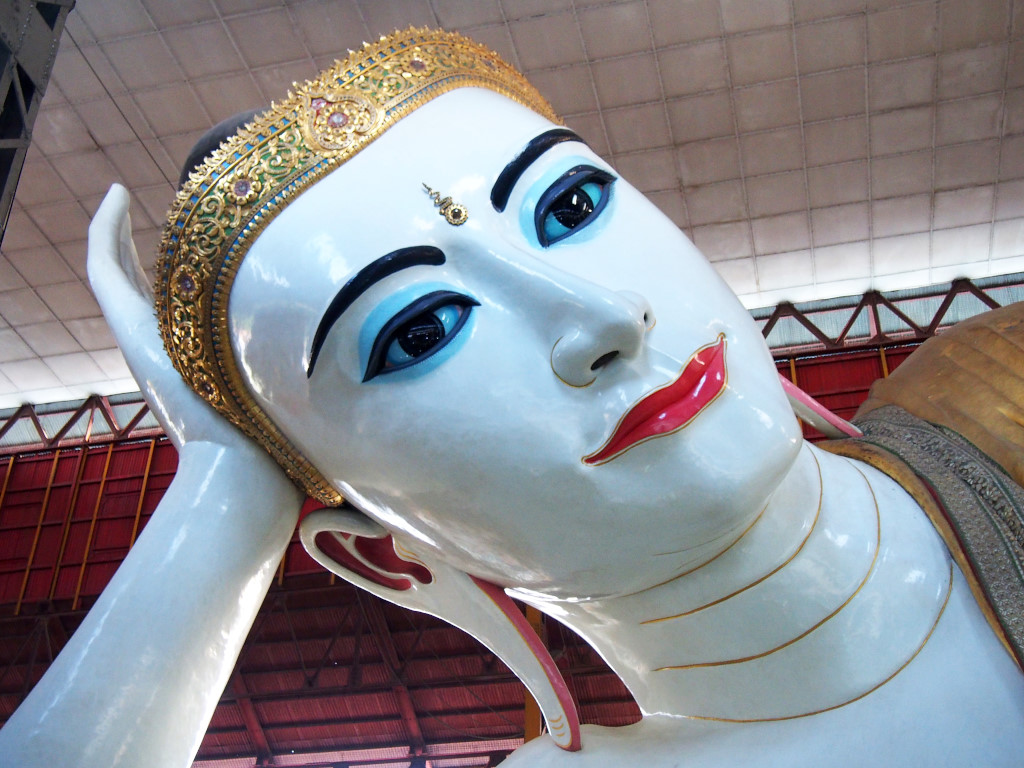
The feet are covered in a grid of gold symbols inscribed against brilliant red soles, representing the worlds of the inanimate, animate and conditions that Buddha transcends. As impressed as I am of the scale and aesthetics of the statuary, my knowledge of Buddhism falls well short of an ability to appreciate their spiritual nuances.
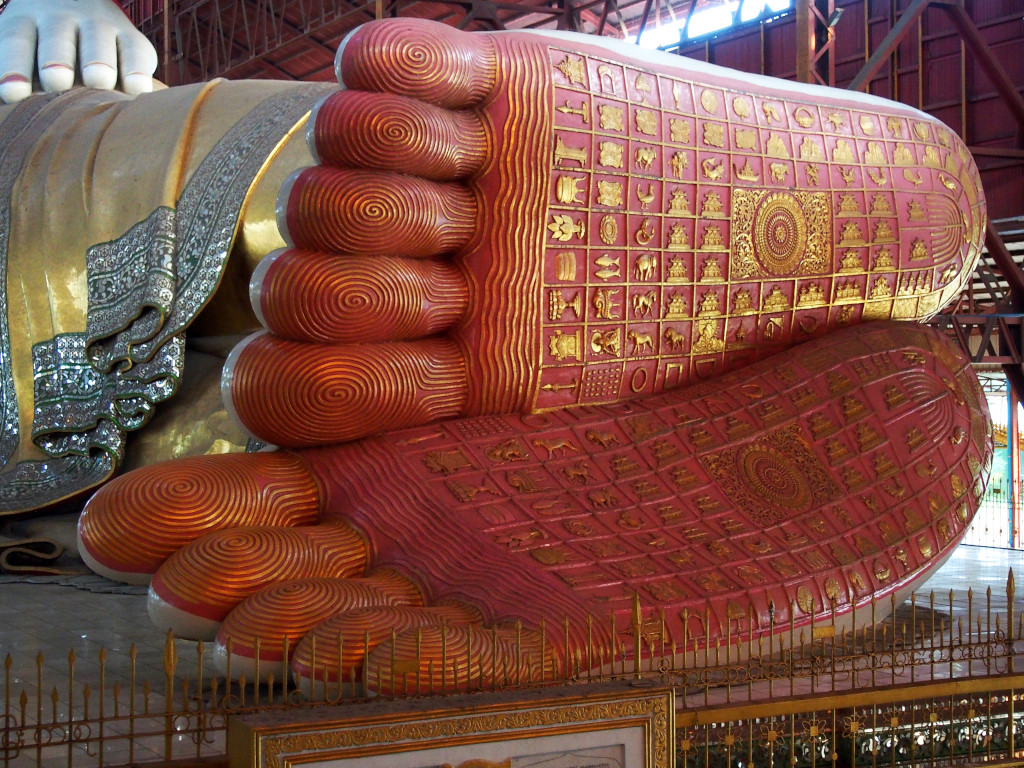
Descending from the Chaukhtatgyi Paya towards the city along one of the arteries that arcs through the northern centre of the city, ultimately leading towards Shwe Dagon and the Peoples’ Park, the Cafe Napoli I had read about suddenly appears before me, naturally commanding me to enter and ingest a powerful coffee to regain my normal composure. All of the conventional pastas and pizzas are offered for prices well beyond the average citizens’ grasp, although for foreigners, visits to such an establishment could only be seen as mandatory.
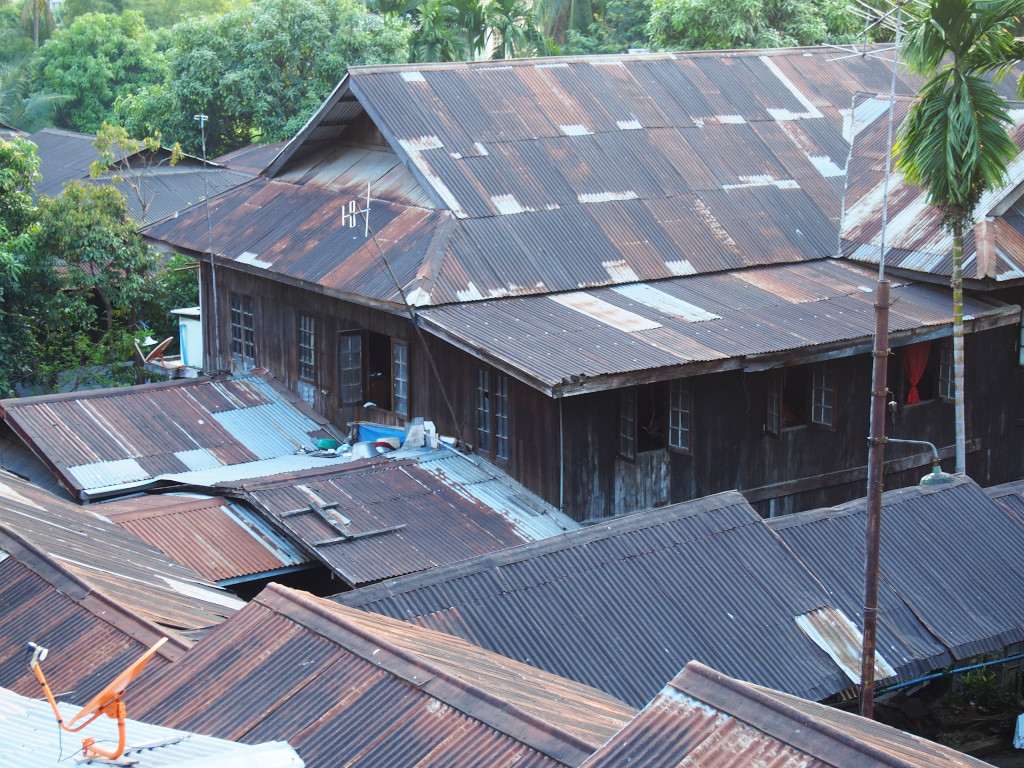
Consistent with the contradictions seen in Yangon’s urban landscape, much of the architecture around me is utterly dilapidated and weatherworn, although intermittently buildings reflecting a level of luxury appear that have little in common with their environment.
Following an incongruously expensive but quite good chicken soup at an outdoor stand, the road leads further towards the Peoples’ Park alongside the thick urban forest, the air now cooler, fresher, the darkened green a haven of nocturnal peace against the relentless thread of traffic.
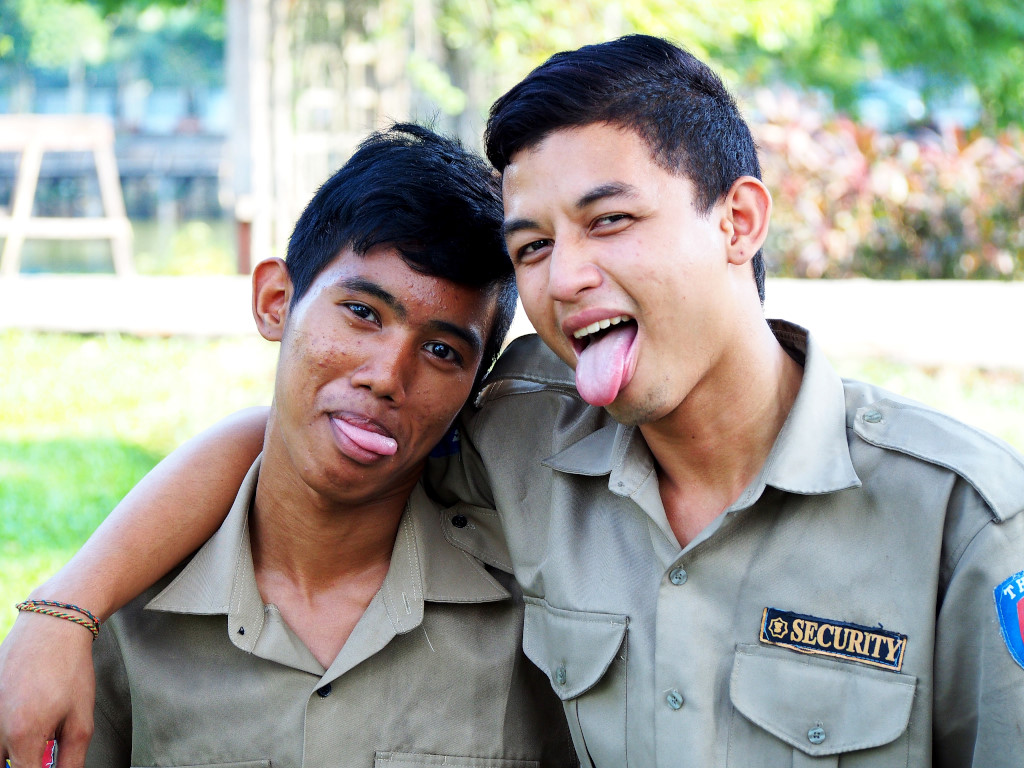
The moon’s burnished disk floats just above the pale golden spire of Shwe Dagon to the left. Half way past the northern face of the park, a playground emerges from whose lurid array of huge carnivalesque statues and compact rides the last few errant visitors disgorge. At the northwest corner of the park, a new but comfortably small shopping mall with a handful of presentable, clean, well-lit and largely uninteresting restaurants leads to a large grocery store on the second floor, replete with all the food items the financially well-endowed minority of the local populace could want.
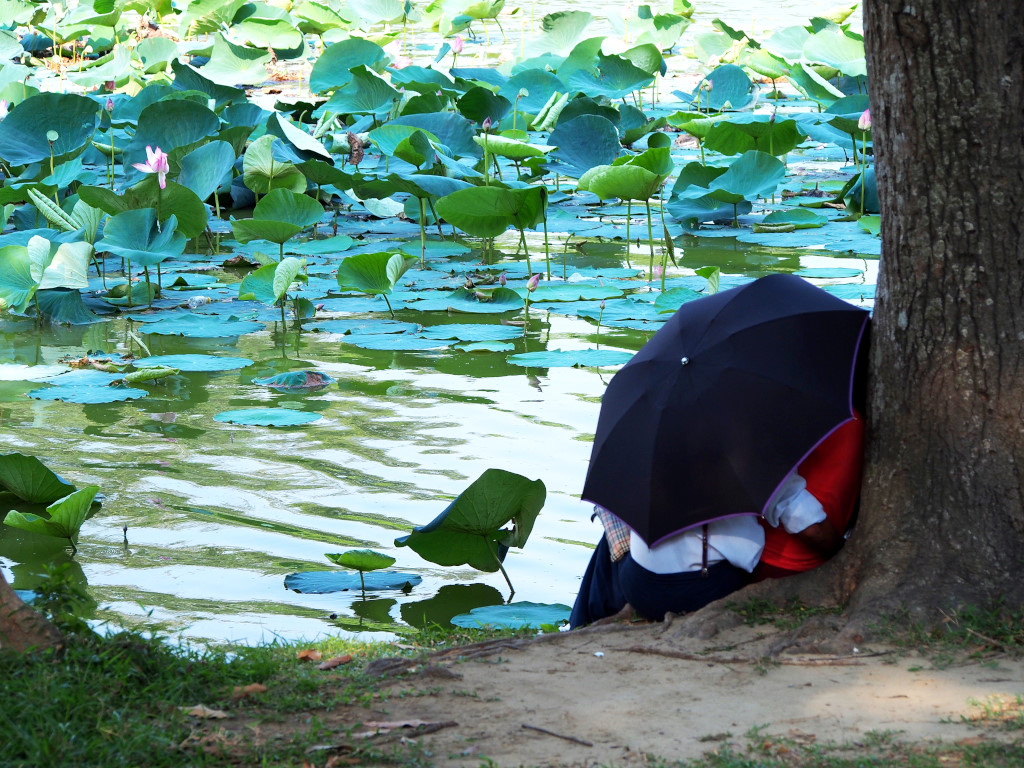
Further towards the Yangon Western General hospital, the world is swallowed in darkness, utterly bereft of the clusters of roadside food vendors one would expect in this country. Nothing other than pompous mid-range hotels set well back from their lots, then the hospital, the posh residential houses and condominium towers, and then the final stretch, the Cafe Parisian and somewhat intriguing residential areas leading towards the Great Treasure hotel on Strand.
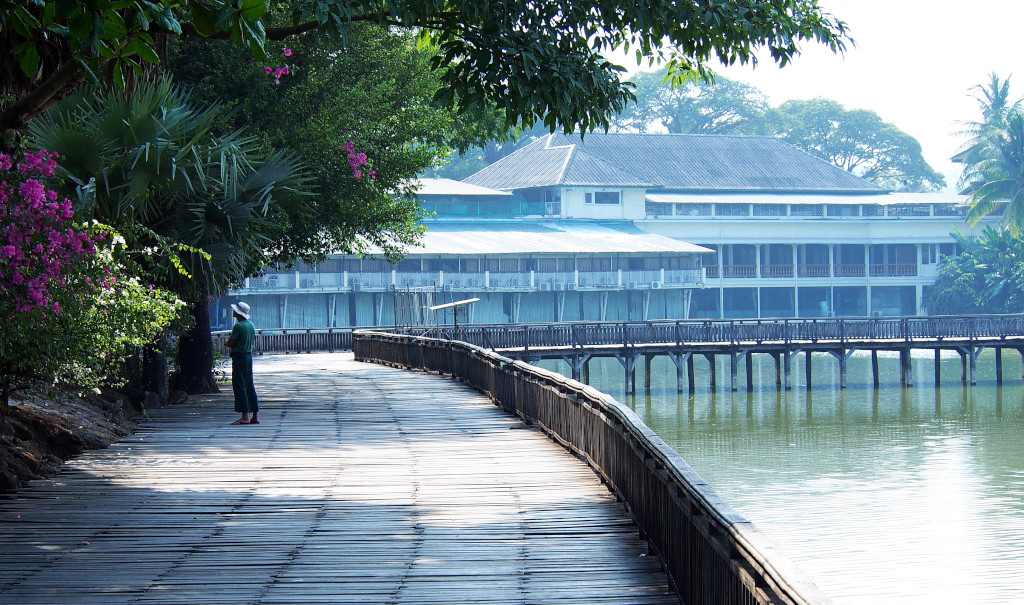
With a small effort, the day became an exercise in wonderment, taking in some astonishingly beautiful sites in northern central Yangon, a testimony as to why it is worth spending more time in cities as varied in their attractions as Yangon.

